My Corner Online
Boyer Info | Old Mines 2017 | The Story of Céladon | Old Mines 2018
THIS IS MY WORKING GENEALOGY BIOGRAPHIES, PLEASE DO NOT COPY AS FACT. Some photos are personal and should not be copied and republished; other images are okay. Documentation I collected as proof to support facts (i.e. dates, relationships, etc.) are available for your use. I share freely, but please do not abuse copyright or perpetuate any information without supporting facts that may or may not be in error. I try to mark in red my questions or documents I need to look for, so your assistance in making this a complete collection is always appreciated.
Sisters Eleonore and Rosine: Mary Eleonore Boyer and Richard Marshall | Rosine Elizabeth Boyer and George W. Rutledge, Sr.
(Richard Marshall additional pages: Pardon Papers and Supreme Court and My Synopsis and Thoughts and Legends of Richard Marshall)
Videos and Photos in Historic Ste. Genevieve
Eleonore and Rosine's parents: Jean Baptiste Boyer & Maria Aurore St. Germain | Charles Boyer & Marie Madeleine Maurice dit Chatillon | Nicolas Boyer III & Dorothee Olivier | Nicolas Boyer II & Louise Payet dit St. Amour | Nicolas Boyer I & Marguerite Maclin | Etienne Boyer & Perinna Peineau |
Joseph St. Germain and Marie Josephine Josette Calvét (Parents of Maria Aurore St. Germain)
Joseph Antoine Calvet and Marie Josephe Therese Marechal (Parents of Marie Josephine Josette Calvét) | Nicolas Marechal and Marie Jean Illeret (Parents of Marie Joseph Therese Marechal and Antoine Marechal, siblings) | line continues with Antoine below
Jean Baptiste Maurice dit Chatillon & Marie Jeanne Corset (parents of Marie Madeline Maurice dit Chatillon) |
Francois Corset Dit Coco and Elisabeth Bienvenu (parents of Marie Jeanne Corset) |
Jean Baptiste Olivier & Marie Marthe Accica (parents of Dorothee Olivier, wife of Nicolas III) |
Pierre Payet dit Saint Amour & Louise Tessier (parents of Louise Payet dit St. Amour, wife of Nicolas II) |
Nicolas Maclin & Suzanne Larose (parents of Marguerite Maclin, wife of Nicolas I) |
Richard Marshall's parents: Benoist Marechal and Mayotte | Antoine Marechal and Mary Catherine Tabeau | Nicolas Marechal and Marie Jean Illeret | Claude Illeret and Simone Marie Martin (Marie Jean Illeret's parents) | also the unknown Mayotte
SYNOPSIS AND MY THOUGHTS
ON RICHARD MARSHALL’S APPEAL AND PARDON
Download .pdf of this writing, 1st Edition, completed January 4, 2022.
Table of Contents
1. CHRONOLOGY
2. KEY CHARACTERS
3. THE INJURY
4. DAVID N. BAKER'S STORY
5. RICHARD'S STORY
6. NOTES ON JURORS
7. NOTES ON THE WITNESSES
Witnesses for Indictment
Witnesses for the State
Witnesses for Defendant, Richard Marshall
Examination before Bass
8. RICHARD MARSHALL'S THIRD WIFE, ELIZABETH GARRETT.
9. NOTES ON COURT DECISIONS
10. THE APPEAL
Bill of Exceptions filed by Richard Marshall May 28, 1864
Respondent's (State's) Brief by Seymour Vollaire filed October 19, 1864
Defendant's (Richard's) Brief by N. Conyer filed November 16, 1864
Respondent’s (State’s) Reply Brief by J P Vastine filed October 25, 1865
Appellant/Defendant's (Richard) Reply Brief by John T. Witham filed Nov. 7, 1865
Opinion of the Supreme Court filed November 20, 1865
11. PARDON PAPERS
List of Documents sent from State
List of handwritten Names on Cover Page
List of letters and synopsis of each in the pardon package as found in 2018
12. MY THOUGHTS
The Wound
Civil War
Coffee Grounds and Whisky
The Knife
The Saddle
Blood on Shirts
The Threats by Richard
The Threats by Young Baker
The Second Murder by Smith Jackson
Richard’s Wife
James Hogan and William Jackson
13. RICHARD’S CHARACTER AND REPUTATON
14. YOUNG BAKER’S CHARACTER AND REPUTATION
15. Mapping the Scene of the Murder
1. CHRONOLOGY
September 4, 1863 - David Baker is murdered
November 24, 1863 - The statements taken by Bass of Young Baker, Mom Baker, and Martha Goff were written down and signed
November 27, 1863 - Richard Marshall is Indicted, arraigned, and pled not guilty
May 27, 1864 - Jury is sworn, trial
May 28, 1864 - Verdict of the jury (1st degree murder) and sentenced to be hung July 9, 1864, between 9 a.m. and 2 p.m. at some convenient place in the Town of Potosi; Richard taken to St. Louis County jail for safe keeping
May 28, 1864 - Motion for new trial was overruled; Defendant filed Bill of Exceptions and requested an appeal
July 1, 1864 - Judge Barton orders stay of proceedings upon appeal
July 9, 1864 – To be hung on this date
August 23, 1864 (about 2 years prior to 1866) - Judge Primm states in his letter about a conversation with Richard in court whereby Richard was there to testify on behalf of a fellow prisoner.
November 17, 1864 - Respondent's brief
December 21, 1864 - Submission set aside and re-argument ordered
October 26, 1865 - Submitted on briefs
November 4, 1865 – Prison break; Richard saves deputy jailor
November 20, 1865 – Supreme Court Affirms Trial Court decision
November 28, 1865 – Pardon Application Submitted
July 3, 1866 - Pardon letter from J. L. Musick
July 26, 1866 - Certified copies of pardon letters sent by Clerk to Messrs.. Voullaire & Jordan
August 2, 1866 - Pardon letter from Philip H. Bishop, jailor
August 23, 1866 - Pardon letter from Judge Wilson Primm
March 14, 1867 - Pardon letter from George Reynolds
July 1, 1867 - There is an envelope cover of this date in pardon package from the Missouri Penitentiary marked “commuted to imprisonment for life” but it is unclear from any other documents when this happened; it would seem on this date directly before the pardon was issued.
July 20, 1867 - Pardon issued (revocable to pleasure of Governor at any time before January 1, 1869)
August 5, 1867 – Smith Jackson shoots and kills Richard Marshall (16 days after pardoned)
2. KEY CHARACTERS
Richard Marshall, the accused
David Baker (hereinafter "Old Baker") victim, referred to as “Uncle Dave” by George Reynolds in pardon letter
David Nathan Baker (hereinafter "Young Baker") the son,
Catherine Baker (hereinafter "Mom Baker") wife of Old Baker and mother of Young Baker
William Smith Jackson, the one who killed Richard
3. THE INJURY
The murder weapon was a knife. There were two wounds, one in Old Baker's side and one across his neck and throat. The mortal wound is described as "the breath of six inches and the depth of three inches," ear to ear. A piece of flesh with his beard was found on the ground. There was only one cut on his side (although Hogan stated he saw 2 cuts). Possibly the right side. The intestines protruded.
4. DAVID N. BAKER'S STORY
(And that of his family witnesses and other witnesses, as heard by the jury)
About August 14, 1863, 3 weeks prior to September 4
Gilson Yarbrough testified that he saw Richard at Simon O'Farrell's home. His brother Daniel Yarbrough was present and only the three were present. Gilson and Daniel are brothers of Young Baker's wife. Simon O'Farrell was not present as he had gone to the post office about 1 1/8 miles away. Gilson testified that he heard Richard swear he intended to kill Old Baker over mineral rights. Gilson states he never told anyone and immediately thereafter says he told his mother.
Daniel Yarbrough testified of the same encounter that Richard said he would kill Charles Goff or Old Baker and would not rest satisfied until he did. Daniel never told anyone and had never heard Richard make threats at any other time.
August 31, 1863
Martha Goff meets Richard in a field. She states he had been drinking and that he stated he intended to kill Old Baker. Martha is the sister of Young Baker's wife.
During the Day, Friday, September 4, 1863
James Hogan and Old Baker had been together all day.
Young Baker testified that one of his sisters had gone home to be with the Marshall children after school and all night. Young Baker testified that Richard came home with the children after school but did not go inside but rather stayed in the brush. Hannah Shook testified that she had made her home at the Young Baker home because she was teaching school there. Was school taught at the Young Baker home or in the community? It is unclear where “there” means.
5:45 p.m. to 6:15 p.m. at Bass Store
At about 2 hours by sun (5:45 p.m.) Richard and Smith Jackson met Young Baker near Northcutts, about 1 1/4 miles from Bass Store. Northcutts is not between Old Baker's house and Bass Store. Richard and Smith Jackson were both riding one nag (old horse) and drinking whiskey. Richard and Smith Jackson were going in the direction of Northcutt's but turned around and went to Bass Store with Young Baker. Richard and Smith Jackson were drinking a dram (a small drink of whiskey) together. They stayed at Bass store until about sundown.
Young Baker, Old Baker, and Richard went to Joseph Bass's home when Bass was not at home. When Joseph Bass came home, Old Baker came to the store with Bass and Old Baker had been drinking. James Hogan (Young Baker's brother-in-law) and William Baker (Young Baker's brother) were also at the store and they left for home about 6:15 p.m. (sunset in early September is about 7:45 p.m. and they left about 1 1/2 hour high about dark). Sometime thereafter Young Baker, Old Baker, and Richard left. Young Baker took one quart of whisky with him. Richard bought and took with him $1 worth of coffee. Young Baker testified that he did not recollect Richard drinking at Bass Store. Young Baker testified that Richard was some under the influence of liquor but not much when they left the store.
[What happened to the nag Richard and Smith Jackson were riding to the store? When did Smith Jackson leave? Maybe he took the nag.]
Time of murder; Dusk; about 7:45 p.m.
Young Baker was riding a grey mare and Old Baker and Richard were walking. They had traveled about 200 (250) yards when Richard borrowed his knife to cut a chew of tobacco. Young Baker was riding behind the two walking men. Young Baker testified that he had no words with Old Baker and Old Baker did not threaten to arrest Young Baker. Young Baker testified that Richard and Old Baker had no hard words.
After having traveled about 3/4 a mile, Young Baker heard a lick and his father fell to the right side of the road. Richard was on Old Baker's left. Richard is left-handed. Young Baker stated his father said "David, I'm a dead man." Young Baker got off his horse on the left side to help Old Baker get up, but Richard stated he should not help Old Baker, or he would kill them both. Richard struck at Young Baker and chased him about 50 (or 80) yards. Young Baker left his mare standing in the road because he had no time to get on her. Young Baker ran for 20 to 35 minutes (corrected to 30 minutes) back to the house. Mom Baker testified that it was 1 1/2 miles from the murder scene to the Baker home.
At what time was the saddle cut off and the mare cut? Young Baker implies it happened after he ran home and before he came back, when Richard was at the murder scene alone.
After murder at Old Baker and at Baker's Home
James Hogan had just gotten to Old Baker's home when Young Baker came and called him out of the house and told him that Richard had killed Old Baker. Young Baker admitted in testimony that he did not know that his father was dead until after he went back (although he had already told everyone at his home that he was dead.) Young Baker spoke in a normal tone of voice, not excitedly. He testified that he did so that he would not make his mother "and the girls" frightened. [When did Mom Baker find out? Surely by the time four men leave her home that the conversations of the four men were heard eventually.]
Immediately thereafter, after 8:15 p.m. at Murder Scene (and at Baker home)
James Hogan, William Baker, Benjamin Hulsey, and Young Baker leave immediately to go back to the murder scene. It was dark and they could hardly see the road, so it was after sunset and after last light which would be at least 8:15 p.m. They met Young Baker's grey mare along the road about half-way and they found the saddle (which belonged to James Hogan but was on Young Baker's mare) and bridle lying next to Old Baker. The saddle girth was cut and there was blood on the horse's mane.
Hogan did not see a knife or the bottle of whiskey there that night. Young Baker testified that he had the bottle of whiskey in his bosom when he got off the mare but did not know where it went after that and did not have it when he got to Old Baker's home. Young Baker did not see the whiskey bottle or a paper of coffee that night, but it was dark.
James Hogan states there are two stabs on Old Baker's side. They saw no knife. They saw no bottle of whiskey. (James Hogan testified he saw the knife afterwards with blood on it and that he had heard the bottle of whiskey was found on the ground next to Old Baker.) Young Baker testified that they did not stay there long.
While James Hogan and Young Baker are at the murder scene, Richard Marshall sees Mom Baker at the home about a 1/2 hour after dark. Mom Baker testified that he came about 45 minutes after Young Baker, it being 1 1/2 miles between the murder scene and the home. Richard stayed only a short time. Mom Baker testified that Richard was so drunk he could not walk straight. Mom Baker testified that when Young Baker came (When? When he brought body back later?) that he was "a little under the influence." Mom Baker testifies she saw no blood on the shirt or the knife.
Immediately thereafter at Bass Store and then Murder Scene (and Simon O’Farrell home)
James Hogan and Young Baker went to Joseph Bass's store for a warrant to arrest Richard. They stayed there about a 1/2 hour and then went back to the murder scene. The "examination of the witness" on the record that occurred that evening indicates Bass is a Justice of the Peace.
Richard went to Simon O'Farrell's home, Justice of the Peace, for a warrant to arrest Young Baker. Simon O'Farrell saw a little stain of blood on Richard's shirt sleeve near the wrist band. This contradicts Mom Baker's testimony that his hands and clothes were bloody. [It would seem Simon O'Farrell, as Justice and Coroner, did not agree to issue a warrant for Young Baker. George Reynold's pardon letter indicates Simon was not at home, yet here is Simon's testimony that he saw Richard.]
Immediately thereafter to Baker Home and the Murder Scene and Baker Home (after midnight to Young Baker home)
Richard’s wife, Elizabeth, arrives at the Baker home before Old Baker’s body arrived. Young Baker’s sister brought her to the home. Elizabeth stayed at the Baker home until Sunday evening. We do not know when, but Elizabeth traveled to her home to get the coffee.
James Hogan and Young Baker went to get a wagon, presumably at the Baker home. They return to the murder scene with William Baker to remove the body, and then returned to the Baker home. Young Baker got blood on his shirt while pulling the body onto the wagon. James Hogan and William Baker told Young Baker to wipe it off with some leaves.
Young Baker left for his home about a 1/2 mile away after midnight. Young Baker testified he went home about 2 a.m. Miss Shook and Susan Hopkins were at his home, but they did not hear. Young Baker told his wife what had occurred. He took off his white shirt and put on a hickory shirt. There was a spot of blood on the wrist band about the size of a five-cent piece. Young Baker does not know when the shirt was washed but likely before the coroner's inquest when they found a spot of blood on it.
That evening, September 4, 1863
It does not say when, but Bass, as Justice of the Peace, made an "examination of the witness" and it is dated the 4th. He questioned Young Baker, Martha Goff, and Mom Baker. It would seem Bass came to the Baker home to question only these three people.
Next morning; Saturday, September 5, 1863
James Hogan states he could see scuffling at the scene. He saw someone, possibly Benjamin Neelson who is a son-in-law of Old Baker, with the knife the next day and the blade was broke about in the middle. It was a single blade. He saw the girth of the saddle cut close to the saddle. There was blood on the saddle before and behind and a cut on the mare on the same side the girth was cut. Young Baker testified he saw coffee lying on the ground, about a half dollars' worth.
The single bladed knife was broken in the middle and had blood on it. The girth of the saddle (the part that goes under the horse), near the saddle, had been cut. There was blood on the front and back of the saddle. The knife was found halfway between the place of death and Old Baker's house, similar to the horse.
Susan Hopkins did laundry at Young Baker's home. She may have washed his shirt but does not admit to it.
Next evening: Saturday, September 5, 1863
Young Baker testified that he did not see Richard again until the next evening when Richard was brought to Old Baker and Mom Baker's home as a prisoner. Young Baker testified that Richard's wife was at Old Baker and Mom Baker's home the night after the murder and that she stayed Friday until Sunday evening.
Sunday, September 6, 1863
James Pratt was a juror on the coroner's inquest. He stated the murder was Saturday and the inquest was Sunday. (Since he learned about the murder on Saturday, it would make this testimony have sense.) He was on the ground where Old Baker was killed and found one or two grains of coffee. He saw a piece of flesh with some beard on it. He saw Young Baker's shirt with some blood on one shirt sleeve. He observed Old Baker's body (at the Baker home now) and the cut was made from right to left on the throat and saw a cut on the side.
Simon O'Farrell acted as Coroner. He is also a Justice of the Peace. He stated he found coffee and some hair. One of the jury found a knife somewhere between the murder scene and the Baker home. Also, a tin was found a yard from the place. The knife was taken to the Baker home to show to witnesses.
A coroner’s jury is a group of 6 - 20 summoned from a district to assist a coroner in determining the cause of a person’s death. It does not try the case but reviews the evidence. If the jury concludes of murder, it can name suspects, and the coroner can order arrest.
November 23, 1863
The examination of the three witnesses on September 4th were signed onto written paper. Bass had questioned Young Baker, Martha Goff, and Mom Baker.
5. RICHARD'S STORY
(Not allowed to be considered by the jury)
Richard came to Old Baker's home and spoke to Mom Baker about 45 minutes after Young Baker had been there and already left back to the murder scene. Richard told Mom Baker that he spoke with Old Baker who told him that Young Baker had killed him. Richard got blood on his hand and clothes by trying to lift him up. When he realized that Old Baker had died, he ran off and left him. According to Richard's testimony, it seems Old Baker died in his arms. He did not know where he was going but found himself at the cabin in the Hollow. When he left the cabin, he heard people coming who he thought were soldiers or militia or the boys, so he stayed out of the way to keep them from seeing him.
By "the boys" he could mean that it was Young Baker and his buddies traveling back to the scene of the murder and this was when the two passed in the road; that is, if "the Hollow" is between the murder scene and the Baker home. The cabin in the Hollow could also be Richard’s home because we know that he went there at some point because his wife Elizabeth found the coffee at his home.
We do not get to hear much of Richard's testimony as it is not allowed in the trial and Richard did not take the stand. We can assume that the events prior to the murder were similar as the story as put together above with him walking the children home from school and then him hanging out with Smith Jackson before meeting up with Young Baker, Old Baker, and James Hogan and deciding to go to Joseph Bass store with them. There he also sees William Baker. Young Baker, Old Baker, and Richard leave the store together, but the testimony thereafter differs regarding the murder scene.
Why was Richard afraid of the soldiers and militia? There is testimony that he was teased that Old Baker reported him to the soldiers, but later was convinced that it was a lie about Old Baker. [If there were militia men walking around due to the Civil War, it is possible that they killed Old Baker.]
6. NOTES ON JURORS
None of the jurors seem suspicious, although the jury foreman is William Smith, which catches the eye because Smith Jackson's full name is William Smith Jackson. However, I have found several William Smith in the 1860 census. William Smith Jackson murdered Richard Marshall after his pardon because he feared Richard was going to come after him. It would be logical that this William Smith is the same as William Smith Jackson and his being jury foreman would be a cause for fear after Richard is released.
Their names on page 4 of record are: 1) James Bass, 2) William Dill, 3) William Smith, 4) Joseph Myers, 5) Archey Conway, 6) Henry Knopf, 7) Westly Joseph Conway, 8) Edmond Boyer, 9) John F. Miller, 10) Thomas Maxwell, 11) Henry G. Hicks, and 12) Henry Beckett.
Their names on page 9 of the Bill of Exceptions are: 3) William Smith the foreman, 2) W.W. Dill, 7) J. W. Conway, 6) Henry Knopf, 8) Edmund Boyer, 12) Henry C. Bequette, 1) James Bass, 11) H.G. Hicks, 9) John F. Miller,4) Joseph Myers, 5) Archibald Conway, and 10) Thomas Maxwell
7. NOTES ON THE WITNESSES
Witnesses for Indictment
There is no written testimony for the indictment, but there is a list of the witnesses who testified: David N. Baker, Catherine Baker, Martha Goff, Benjamin Hulsey, Wm H. Baker, James Hogan, Jilson Yarberry, Dan G. Yarberry, Joseph Bass, and James Pratt. G. B Cole Foreman
Witnesses for the State
1. Joseph Bass. There are two Joseph Bass that lived in Johnson Township in 1860. The father Joseph C. Bass (1822-1895) was an M.D. He had a son Joseph Bass (1858-1870). The father is nearer Richard’s age and may be more likely to have had a store. He lived 2 1/2 miles from the Bakers. Joseph Bass previously saw no ill feeling between Old Baker and Richard, except one time Richard stated he had a settlement with Old Baker for reporting him to the soldiers. However, Old Baker and Richard had talked it out and Richard had stated to Joseph that he was convinced Old Baker had been lied about and they were friendly. Old Baker and Richard had worked for Bass together and were friendly with each other. [NO KNOWN RELATION, seems impartial and credible] P. 3, 10
2. James Hogan is Young Baker's brother-in-law. Old Baker was his father-in-law. James Hogan is married to Rhoda Ann Baker. Rhoda is Young Baker's daughter. This would make Young Baker his father-in-law, not brother-in-law. [FAMILY] P. 3, 11
3. James Pratt was a juror on the coroner’s inquest. James Pratt was 36 years old (born 1824) in the 1860 census living in Johnson Township at Rock Springs. [NO KNOWN RELATION] p. 3, 13, 28
4. Catherine Baker is Old Baker's wife. Her maiden name was Catharine Algire Kepler. [FAMILY] P. 3, 14, and 34
5. Simon O'Farrell was a Washington County Missouri, Justice of the Peace. Richard came to his home for a warrant against Young Baker. Simon also acted as coroner who did the inquisition on Sunday. He also testified for the defense that the Yarboroughs were of bad character. Simon O'Farrell is single in the 1860 census living in Rock Springs as a Lumberman. He is 30 years old born in 1830. From Find-a-grave: Simon P. O'Farrell was a Washington County, Missouri. Justice of the Peace. Proof of this is he married Thomas N. Jackson and Elizabeth Tierey in Washington County, Missouri, in August 1863. O'Farrell is buried north of Goosecreek Road and west of the old Pea Ridge Mine Railroad. tracks in Northcutt, Johnson Township of Washington County, Missouri. [NO KNOWN RELATION, seems impartial and credible] P. 15, 27, 30
6. Martha Goff was 23 years old in the 1860 census (born 1837). She is married to Charles Goff (Gough) Sr. Martha’s maiden name is Yarbrough. Her sister is Margaret Yarbrough who is married to Young Baker. Ms. Goff testified that on August 31, 1863, Richard stated he intended to kill Old Baker for some news that he had been carrying. Richard had been drinking whiskey and they met in the field to talk for about 10 minutes, and Richard would not let her pass. Ms. Goff testified to the recent previous times seeing Richard, none of which seem anything unusual, even spending the night at their home to care for Richard's sick wife. [FAMILY] P. 3, 15,
6B. Christine Isgriggs is mentioned in Martha Goff’s testimony is 27 in the 1860 census living in Rock Springs and married to Madison Isgriggs. Her maiden name is Harper. [NO KNOWN RELATION] P. 16
7. Gilson Yarbrough (Jilson Yarberry) is Margaret Anne Yarbrough's brother, Margaret being married to Young Baker. Gilson Yarbrough testified that about three weeks before the death, he heard Richard swear he would kill Old Baker over some mineral ground when he was at Simon O'Farrell's mill, with only the three of them present. [FAMILY] P. 16
8. Daniel Yarbrough (Dan G. Yarberry) is Margaret Anne Yarbrough's brother, Margaret being married to Young Baker. Daniel Yarbrough testified that Richard stated he would kill Charles Goff or the old man Baker and would not rest satisfied until he did it. [FAMILY] P. 17
9. Young Baker (David N. Baker) is the son of Old Baker who died. Young Baker’s mother, Catherine Susan Baker, has a brother who is Nathan Baker, father of Old Baker who was killed. Old Baker’s son is David N. Baker who testifies here. [FAMILY] P. 17.
Witnesses for Defendant, Richard Marshall
10. James Pratt was a juror on the coroner's inquest, testified to seeing the body's injuries and not sure which way cuts were made on the throat. [also testified for State; [NO KNOWN RELATION] P. 3, 13, 27
11. Michael Flynn testified to having known the Yarbrough's and that their characters were not respectable. [NO KNOWN RELATION] P. 28
12. John E. Smith testified as to Yarbrough's character that people don't think much of them. [NO KNOWN RELATION] P. 28
13. Paul Duclos testified as to Yarbrough's character as ½ dog speak. [NO KNOWN RELATION] P. 29
14. Susan Hopkins had been living at Young Baker's home for about a week. She examined and washed Young Baker's clothing. [NO KNOWN RELATION] P. 29
15. Milton Hill testified that Young Baker's character had never been called into question. [NO KNOWN RELATION] P. 30
16. Francis Duclos testified regarding Yarbrough's character (but transcript does not say if it is good or bad). [NO KNOWN RELATION] P. 31
17. Charles Goff is the husband of Martha. He testified that he had known the Bakers to have drunken sprees. The Court did not allow him to testify regarding the relationship between the two Bakers. [FAMILY] P. 31
18. Hannah Shook testified to being at Young Baker's home when he returned that evening. She was the teacher and stayed at his home. [NO KNOWN RELATION] P. 31
19. Vincent Blankenship: He was not allowed to testify as to whether Young Baker had threatened Old Baker at the same spot. [NO KNOWN RELATION] P. 32
These two people were mentioned as witnesses in the indictment but are not brought as witnesses in this appeal: (20) Benjamin Hulsey and (21) William H. Baker. William is Young Baker's brother. No known relationship for Benjamin Hulsey.
Catherine Baker and Young Baker are also recalled to testified for the defense. [FAMILY] P. 32
Examination before Bass
As a magistrate, Bass questioned folks prior to the arrest, similar to what the police would do nowadays when questioning witnesses while trying to solve a murder.
1. David N. Baker - See notes on Young Baker above.
2. Martha Goff - See notes above.
3. Catherine Baker - See notes above.
8. RICHARD MARSHALL'S THIRD WIFE, ELIZABETH GARRETT.
Richard’s third wife is also a relative of the Smiths and Jacksons. Elizabeth Garrett has her name sometimes mistaken as Elizabeth Jackson. Her maiden name is Garrett. Elizabeth's mother, Mahala Hamilton, first married John Garrett and had two children, one of which was Elizabeth. Mahala later married William Pentecost Jackson and had 7 more children. Therefore, Elizabeth's name is often mistaken as her mother's and half-siblings' surname of Jackson.
William Pentecost Jackson's first wife was Jane "Jinny" Salle. One of two children of William Pentecost & Jinny Jackson is Andrew Phillip Jackson.
Andrew Phillip Jackson had two wives, Catherine Sue Baker and Catherine Hamilton. Andrew had two children by his first wife, Catherine Sue Baker, the son being William Smith Jackson. Therefore, "Smith" Jackson's Step Aunt is Elizabeth Garrett (married to Richard Marshall).
William Smith Jackson was born on January 1, 1834, and Richard was born about 1815. Richard is much older. Smith Jackson shot Richard Marshall after his pardon.
I have a relationship with Smith Jackson as Step Grandson of Mother-in-law of 3rd great-Grandfather! With the "step" and the "in-law" it really means I have no blood relationship to him.
9. NOTES ON COURT DECISIONS
When sentenced to death and given the opportunity to speak, Richard said nothing. Richard's counsel immediately requested a motion for a new trial, and it was immediately denied. Richard was to be held in the St. Louis jail. Richard filed a "Bill of Exceptions" and requested an appeal, which was granted. It is important to note on the cover page the words “no open exceptions.” It is my understanding that the Appeals Court in this time period did not automatically hear every request for an appeal as the area the court covered included much of Missouri. However, death sentences were automatically granted the right for an appeal.
On July 1, 1864, the day the County transcript was filed with the Court of Appeals, "Barton Bates, one of the judges of the Supreme Court, having inspected the record in this case, and being of opinion that there is so much doubt as to the legal propriety of all the proceedings at the trial of the cause as to render it expedient to take the judgment of the Supreme Court therefore do by this order expressly direct that the appeal herein granted shall operate as a stay of proceedings in the judgment." (P. 22) To “stay” the proceedings is to halt the legal process or to withdraw the charges. A stay is often used to postpone a proceeding indefinitely, but a stay can be lifted within one year.
10. THE APPEAL
An appeal can be granted if the verdict was unreasonable or could not be supported by the evidence, the judge made an error in interpretation of law, there was a miscarriage of justice on any grounds (basis), or there were errors in trial procedure.
Bill of Exceptions filed by Richard Marshall May 28, 1864
P. 4.
NO SEAL ON ORDER: The Court did not affix a seal to the order of the court to the Sheriff to summons a jury.
JURY NOT DRAWN BY BALLOT BOX: Jury called up four at a time and sworn and tried as to competency.
HENRY BEARD IS NOT COMPETENT: Richards's attorney objected to the competency of this juror and the objection was overruled. Thirty-six jurors were selected for the jury pool which included Henry [Note: but Henry was not selected as a juror].
TESTIMONY REGARDING DAVID N. BAKER NOT ALLOWED: Young Baker was not allowed to testify against himself (self-incrimination). Other witnesses were not allowed to testify regarding Young Baker and his relationship with his mother and father. The Magistrates questioning (think of the police questioning after arrest) was allowed into evidence and thereafter excluded from being considered in the jury instructions because of Richard's statement to Mom Baker that Old Baker had stated Young Baker was guilty.
Respondent's (State's) Brief by Seymour Vollaire filed October 19, 1864
P. 22-23.
This Brief is in response to the Bill of Exceptions that was filed by Richard's attorney.
JURY SELECTION ERRORS: No seal to the venire (jury pool) and no return by the Sheriff.
Response: Henry Beard was found to be competent and yet he was not a juror. Even if there was a seal, it would not have mattered because the juror in question was not used.
COURT ERRED EXCLUDING ANSWERS BY YOUNG BAKER: The Court properly sustained the questions asked of Young Baker because the answers may incriminate himself. Also, if Young Baker answered that he had threatened his father, the facts would be disconnected from any defense made by Richard.
Defendant's (Richard's) Brief by N. Conyer filed November 16, 1864
P. 23-24.
JURY SELECTION ERRORS
The venire facias should have been sealed and the Sheriff should have made a return upon the writ. The names of the jurors should have been put in a box and drawn and listed as they were drawn.
COURT ERRED EXCLUDING ANSWERS BY YOUNG BAKER AND OTHERS
The court erred in excluding the evidence of Young Baker when he was asked if he and his father had ever had any difficulty, when he was asked if he had ever threatened to take his father’s life, when he was asked by the Counsel for Richard did you and your father have a fight on or near the spot where he was killed at a previous time; when he was asked by Richard’s Counsel if he had not near the spot where his father was killed drawn a knife upon his father and threatened to kill him.
The court erred in excluding portions of the evidence of Mrs. David N. Baker, Vincent Blankenship, and Charles A. Goff.
The court erred in refusing the Counsel for Richard the privilege of reading to the jury the examination of the prisoner before Bass, the Justice of the Peace, after having admitted the same in evidence it being a part of the examination.
The court also erred in striking out from the evidence the examination of Richard and keeping it from the jury after having admitted the same as it was a legitimate part of the examination.
The court erred in charging the jury to entirely exclude from their consideration every statement or action made by the prisoner in reference to the killing of David Baker much after that occurrence.
Respondent’s (State’s) Reply Brief by J P Vastine filed October 25, 1865
P. 25-26.
JURY SELECTION ERRORS
An order on the Sheriff is not required to be sealed and would not have made it more effective. The jury was substantially selected in accordance with the law. Richard's attorney should have made exception before proceeding to trial.
COURT ERRED EXCLUDING ANSWERS BY YOUNG BAKER AND OTHERS
Objections were properly sustained in that evidence must correspond (relate) to the allegations. Collateral facts are excluded. Answers cannot incriminate witness or call into question his integrity.
Mrs. David N. Baker's testimony was excluded because it would have been equivalent to Richard testifying on his own behalf without taking an oath. Same principal with Vincent Blankenship.
After the testimony in court was excluded, it was proper that the written testimony before Bass be excluded.
Improper testimony was introduced and afterwards withdrawn. This testimony benefited Richard, so the withdrawal of the same did not injure him, as opposed to testimony that injured him (and was heard by the jury) and thereafter withdrawn. By withdrawing the testimony, the Court corrected its own error.
No objection to the instructions was made.
Appellant/Defendant's (Richard) Reply Brief by John T. Witham filed Nov. 7, 1865
P. 27-28.
JURY SELECTION ERRORS: Direct violation of the letter and spirit of the law.
COURT ERRED IN SENDING FULL TRANSCRIPT TO APPEALS: Date of sentence and Motion for New Trial were not included in the transcript sent to the appeals court.
COURT ERRED EXCLUDING ANSWERS BY YOUNG BAKER AND OTHERS
Young Baker did not object for the reason of self-incrimination, so the Court interfered without hearing the answer.
Goff and Blankenship’s testimony were legal testimony as calculated to support a hypothesis different from that of the guilt of the defendant.
The instructions mislead the minds of the jury. The court permitted the introduction of evidence and the testimony, with the consent of the prosecutor, giving up their right to pass on it.
When any portion of the admissions of the prisoner are allowed, the entire statement is allowed.
Opinion of the Supreme Court filed November 20, 1865
P. 28-29.
JURY SELECTION ERRORS: Seal is not necessary as the Juror objected to was not chosen.
COURT ERRED BY EXCLUDING ANSWERS BY YOUNG BAKER: The questions asked of Young Baker did not show hostility toward Richard, but rather toward Old Baker and Mom Baker. Therefore, they are collateral facts which are irrelevant. The Fifth Amendment of the Constitution protects Young Baker from being compelled to incriminate oneself. However, if my understanding is correct, if the question were regarding hostility toward Richard, the Judge could have compelled him to answer.
COURT ERRED BY EXCLUDING STATEMENT OF RICHARD: Although the decision does not specifically set forth hearsay, Richard’s statements to Mom Baker would have been hearsay. Hearsay is a statement which a witness has heard another person say, or a written statement offered in evidence without producing the author to testify as to the issues stated. Richard himself could have testified at trial but as often is the case for the accused he did not. The trial Court admitted the statements of Richard to Mom Baker into evidence and then withdrew them as admissible in the jury instructions thereby correcting his own error.
Substantive evidence is that which supports a fact that has been proved, as opposed to evidence that supports procedural or collateral issues. Corroborative evidence refers to something that makes substantive evidence more concrete. Substantive evidence requires no corroboration. Collateral facts are unconnected, or only remotely connected, with the issue of trial; that is, a fact which is secondary and subordinate to the main issue. As no fair and reasonable inference can be drawn from collateral facts, they are inadmissible in evidence.
In my opinion contrary to the decision in this case, there did exist substantive evidence to support this murder: the presence of Young Baker and Richard, the blood on the shirts, the knife, etc. The existence of substantive evidence should have allowed an exception for hearsay.
The Trial Judge and the Appeals Court determined the content of Richard’s statement to Mom Baker to be collateral facts as the Judgment text reads, “This statement was not competent evidence either for the State or for the prisoner.” The words “competent evidence” could be exchanged with “admissible evidence” when understanding the Judgment rendered. The statement was not admissible because it was determined by the Appeals Court as collateral fact. However, there was enough substantive facts to support a connection and, therefore, it is my opinion that both the Trial Court and the Appeals Court erred in Judgment regarding admitting Richard’s statements.
The Judge also makes a good point that since the jury had heard Richard’s statement which was a positive one in his favor and thereafter were told to disregard it, the hearing of the statement could not have harmed Richard being left lingering in the jurors’ minds. If what Richard had said would have been detrimental to him and the jury asked to disregard it, then there may be cause for error.
COURT ERRED IN SENDING FULL TRANSCRIPT TO APPEALS: A Motion for a New Trial was made and overruled, but the Motion for New Trial was not made a part of the Bill of Exceptions. The Motion for New Trial is merely referenced and the Motion itself is not in the record, so we have no text detailing the reasons for requesting the Motion. This Motion was made immediately after the Judgment was entered, so it was made timely within the four-day period allowed. Since the Appeals Court has no written Motion for New Trial, it has no special statement of the reasons on which the motion was requested. There were some changes in the law requiring a written statement of reasons and grounds between 1849 and 1855 and this Appeals Court references those changes.
The Appeals Court refers to a “motion in arrest,” which is a post-trial motion to quash or void the Defendant's indictment, information, or judgment, claiming a substantial error which appears on the face of the record. No “exceptions” can be taken on a matter that does not appear in the record. The word “exception” is not used nowadays and instead the word “objection” is well known and can be used interchangeably.
In 2018 there are 83 cases which cite the decision in Richard’s appeal which means that Richard’s case made “case law!” That is amazing to me that his case made a significant change in history. The basic decision of the court was that the Appeals Court could not decide on a Motion for New Trial that did not appear in the record or in the Bill of Exceptions. I struggle to make sense of the decision when I read it. In my words and understanding, an appeals judge cannot decide something of which they know nothing about. Richard’s case was also cited once for the decision not to allow Richard’s Statement to Mom Baker, cited 4 times for the decision regarding the impaneling of the jury, and cited 2 times for the decision regarding self-incrimination.
and cited 2 times for the decision regarding self-incrimination.
11. PARDON PAPERS
List of Documents sent from State
The below are the documents that were sent as the pardon package to Mssrs. Voullaire & Jordan which were on file. Only one of these letters were in the documents held by the State Archives in 2018, and yet additional letters were in the State Archives written after the certification of the original. I sure wish I could be able to read all the letters, especially the one by the women. Voullaire and Jordan appear to be the attorneys for Richard in his pardon process. They collected letters on Richard’s behalf to be submitted to the Governor.
1. Letter from prisoner to Capt. Ehlert - Richard wrote a letter to Captain Ehlert, most likely requesting help with the pardon. This letter is not available. Captain Ehlert oversaw the jail.
2. Letter from M. Conyer, attorney at law - Mr. Conger (or Conyer) was Richard’s attorney in the original trial.
3. Letter from Messrs Primm -letter is available, see notes below
4. Letter from Voullaire -Mr. Voullaire is Richard’s attorney for the pardon
5. Letter from McNeil -who is this?
6. Letter signed by several ladies - I can only imagine that this letter is by Richard’s third wife, Elizabeth, and his daughter, Mary Lucinda. I would love to know how it reads.
7. Statement of John J. Witham, counselor for the defendant - Mr. Witham was Richard’s attorney during the appeal who wrote the Brief.
List of handwritten Names on Cover Page
The below are the handwritten names on the cover page of the pardon papers. I am not sure the type of list, but it may be those who testified in person or others who wrote letters. Nonetheless, it would seem a list of people who “came to bat” for Richard in the pardon process.
Judge Wilson Primm - Letter available, see below.
Captain Bishop, Jailor - Letter available, see below.
Louis Musick - deputy jailor who Richard saved his life
Lawyer Claiborne - who is this?
Seymour Voullaire - Richard’s attorney in the pardon request
Petition from the Union Tract Society – I see in the newspapers the same abbreviated from “The American Sunday School Union and Tract Society.” The Daily Dispatch for July 18, 1861, indicates the Society was formed to supply suitable reading matter for soldiers to supplant the American Bible and Tract Society. I can only imagine that Richard was reaching out to anyone and everyone to come to his aide.
Testimony of Capt Ehlert - This is the Captain of the jail, with the Jailor and Deputy Jailors below him.
List of letters and synopsis of each in the pardon package as found in 2018
1. Philip H. Bishop, August 2, 1866. Philip was one of the jailors at the time of the jail break. Richard was given the job of Hall Tender. Richard saved the life of his deputy jailor, Peter Stretch, as well as J.L. Musik whose testimony is given by letter. Richard gave valuable information regarding plots of escape as Hall Tender. The deputies placed confidence in Richard.
2. Judge Wilson Primm, August 23, 1866. Judge Primm was a prominent Judge in St. Louis who also grew up with Richard, knowing him by a nickname of Zico. Judge Primm was also known as a historian. If it were not for Judge Primm, I may never have known Richard’s parents and childhood history for in his opening paragraphs he begins with Richard’s history. Judge Primm’s letter speaks for itself giving many positive character remarks about Richard.
3. George Reynolds, March 14, 1867. George is from Rock Springs, Washington County, where Richard lived with his wife Elizabeth and near the Bakers and other folks within this story. From my research, seems that George is the postmaster, so he would have had some clout with the Judge in his position as well.
George suggests that Richard and Young Baker both accused the other, but that George believes neither of them committed the murder, suggesting Old Baker committed suicide. George cites several events where Old Baker acted suicidal. George Reynolds points out that if either man were present of the other during the murder, a fight would have brought about marks on their skin, of which there were none. George believes that all three were drunk, that Richard borrowed Young Baker's knife to cut tobacco and handed it back without seeing in the dark, believing Young Baker to have taken the knife, but instead Old Baker took the knife. This left Young Baker to believe Richard still had the knife when instead Old Baker had the knife and committed suicide. The rumor is that the blood on Richard's shirt must have gotten there discovering the body. George tells of Old Baker’s character to have been “common for him to stumble over and sometimes lay a long time in the cold.” This sounds like a drunk man.
There was a rumor in the whole county that Richard had confessed, which confused everyone enough to not sign a petition that was sent around. Richard thought everyone would sign the petition or else he would have never had it sent. Richard must have felt that everyone believed in him as innocent, but some rumor frustrated any support. George Reynolds brings up that many "tall tales" are in people's minds, all trying to figure out what really happened. The "news" and/or rumor was brought to town by Smith Jackson and Young Baker. Therefore, years after Richard’s murder conviction, Smith Jackson and Young Baker are still working together as family to keep Richard in jail by spreading false rumors around town that Richard had confessed.
There was a hurriedness by both Richard and Young Baker to report the other to authorities. Richard told his wife ahead where they were going to report the murder and found that man not at home. We learned in the trial testimony that Richard’s wife was at Old Baker’s home immediately after the murder for a period of days. Young Baker, having the information of Richard’s plan to have a warrant issued for Young Baker, outwitted Richard to get a warrant issued by another person. Having told the Baker family where he was going, they knew his travel path and were able to arrest Richard immediately.
George tells a story of Young Baker’s involvement in the Civil War. “Infernal rebels came along, and one said he was a recruiting officer…they soon found quite a company of fellows that thought themselves not fit to serve in the union ranks…Dave went on with them till he got tired or seen dead men enough, quit them and come home.”
George tells a story of the Civil War and a blanket. Thereafter, George indicates that people were required to take an oath when registering to vote never to have been in armed hostility against the United States or given aid to such people. George states Young Baker "took the oath, swallowed it with as clear a conscious as ever a copperhead swallowed a frog." George indicates Young Baker is a "copperhead."
George continues about Old Baker’s character as one who has “spells of desperate drunkenness days, weeks, and sometimes months.” George tells a story of Old Baker staying at the home of well-respected Mr. Nickels, carefully lays a butcher knife on a quilting frame for later use, enters the bedroom of Mr. & Mrs. Nickels and gets in bed with them, wherein a fight occurs. George likened this story to Old Baker getting in the bed hoping Mr. Nickels would kill him, that being suicidal. George references Old Baker’s “terrible staring and grit of his teeth that was so common with him.”
[Page 4] George mentions an “Old Man Jackson” who died January 26, 1867. I believe this to be William Pentecost Jackson. Before my discovery, no one had a death date for him. George also mentions Richard Jackson. This would be William Pentecost and Mahala Jackson’s son, Richard Henry Jackson. George also mentions the “Lees” and I do not know that family. George also mentions “a Blanton” and I believe this person was helping George deliver the mail.
4. J. L. Musick, July 3, 1866. Mr. Musick is one of the deputy jailors. He provides a good description of the jail break on November 4, 1865, of 16 prisoners, 3 of which escaped and 13 of which Richard helped to push back into the jail.
12. MY THOUGHTS
To sum up my thoughts, I believe Richard was set up by the family he was living in and amongst. I believe David N. Baker (Young Baker) murdered his father and the family came together to protect their own by putting the blame on Richard. I believe that Smith Jackson and Young Baker, as relatives, were in cahoots, and family protected family. I believe that Smith Jackson murdered Richard Marshall in cold blood because Richard knew that the two tricked him and the two knew that Richard was angry with him. To keep their untruths from being exposed, Smith Jackson murdered Richard Marshall at the first opportunity to put the family lies to rest.
Page numbers reference the .pdf of the Appeal Transcript.
The Wound
P. 2. Old Baker died of a knife cut to the neck 6 inches long and 3 inches deep. Would someone be able to make such a long and deep incision on themselves? I do not believe the theory of George Reynolds that Old Baker died of self-inflicted wounds. Considering the wound to his throat there is question regarding whether Old Baker would have been able to speak. Both Young Baker and Richard alleged that Old Baker spoke.
P. 8, 11,12. James Pratt testified, “The cut on his throat was done from the right to the left side. There was but one cut on his side that I saw. On the ground where he was killed we found a piece of flesh with his beard on it. His throat was cut from ear to ear... old man Baker was a very large man 6 feet tall I think.” In testimony for the Defendant, Pratt stated, “I examined the cuts on his throat. Can’t say which way the cut was made whether from left to right or right to left.” Young Baker testified, “Marshall was at my father’s left at the time, Marshall is left hand. Marshall struck at me with his left hand” and “We went on and found Father lying on his back with his throat cut from ear to ear.”
There was attempt made to place blame on Richard because he was left-handed, and the cut was made in such a direction that a left-handed person would have made the cut. However, James Pratt changed his testimony, so this point is moot.
Civil War
P. 6 Joseph Bass testifies that at one time Richard “had a settlement” with Young Baker for reporting him to the soldiers. In George Reynold’s letter, Richard is solidly Union and Young Baker served with the rebels (Confederate). Therefore, Young Baker would have reported Richard to the Confederate soldiers. For what reason? Merely putting Richard’s name on a list as a Union supporter would give cause for the Confederate soldiers to track him down to kill him.
P. 18. Mom Baker’s testimony at the examination before Bass regarding what Richard had told her, “That he had got the blood on his hands and clothes by trying to lift him up and when he found the old man was dead he ran off and left him. Did not know where he was going, the first place that he found himself was at the cabin in the Hollow. That when he left that he heard some persons coming. He said he thought they were soldiers or militia or the boys. Stayed out of the way to keep them from seeing him.”
Richard lived his life in great fear of the confederate soldiers. I wonder how much the Bakers and Jacksons were a part of this and whether they enjoyed puffing up the fear by teasing him with false scares. On the other hand, I wonder about the reality of the times where brother against brother existed, and that the enemy always lived amongst the community. The cause of this murder and the blame thereof may have existed because of the division of family over the war.
P. 13 & 14. Young Baker testified, “She had gone home with Marshall’s children from school to stay all night and I think from what I heard Marshall came with them but did not come to the house but stayed out in the brush.”
Richard lived his life quite in fear that the confederate soldiers were seeking to harm him. Richard was 1/4 Native American and as such would have been strongly against slavery of Indians and blacks alike. Richard was living as a minority in a community of white folks. As such, he was likely a victim of discrimination and actions of a demeaning nature. Were the Bakers like bullies who enjoy the constant teasing causing someone to live in fear? Did they take delight in causing a minority grief? I have a gut feeling that there was more to the Civil War and discrimination hypothesis than we know. Discrimination alone could have been motivation for the Bakers and Jacksons to have made Richard the target of blame for the murder.
Coffee Grounds and Whisky
P. 6, 7, 8, 11, 14, 15 and 6, 7, 8, 9, 11, 13, 14, 18 There is much testimony regarding coffee and whiskey/whisky (page numbered respectively) as if the few grounds of coffee at the crime scene place Richard there, but the lack of the whiskey at the crime scene places Young Baker elsewhere. Joseph Bass confirms that Young Baker left his store with whiskey and Richard with a dollar’s worth coffee. James Hogan testifies, “We found one or two grains of coffee on the ground.” Who searches for one grain of coffee at a murder scene, which is much like in movies when one hair with DNA is evidence to place a killer at the scene? Why is there a need to use the coffee to put Richard at the scene when facts already place him with the other two men walking down the road together? It feels like a set up to come up with as much “story” as possible to put the blame on Richard.
James Hogan also testified, “I heard something about a bottle of whiskey being found on the ground where the old man Baker was killed.” I imagine since the bottle of whiskey was found at the scene placing Young Baker there that the family had to come up with a counterclaim of something placing Richard at the scene as well. It is interesting that Young Baker gets defensive when he is asked what he did with the whiskey and replies, “I don’t think it is any of your business what I done with it.” When asked a second time he replies, “I don’t like to tell unless I am paid for it.” It is a touchy topic with Young Baker.
On the other hand, the testimony about how much under the influence all three of the individuals would bear some weight of importance. It is also worth noting who carried the whiskey and who carried the coffee which in and of itself is telling of who was drinking it. Young Baker’s mother testified regarding her son, “when he came home was a little under the influence of whisky. When Marshall came there, he was very drunk he could not walk straight.” I put little credibility on these statements being that a mother would have reason to make false statements to make her son look better and the other look guilty. Also, Young Baker testified that he did not tell his mother when he first came home and that she did not know he was there. A lot of time would have passed before Young Baker came home the second time. The only other one to speak about Richard consuming alcohol is Young Baker himself, “Marshall and Jackson had whisky with them.” People having whisky and people drinking whisky or appearing drunk are two different facts.
Interestingly, the coffee is ultimately at Richard’s home, which indicates that Richard had returned home. Young Baker testified, “I saw coffee at Father’s house next day after Mrs. Marshall, prisoner’s wife, went and got it where it was last... I think she went by the house after the coffee.” Did Richard’s wife go after the coffee at the request of the Bakers who were busy concocting a story?
The Knife
P. 7, 8, 10, 15, 18, 19, 20, 25, 30 The murder weapon, the knife, is an important piece of evidence. James Hogan testified, “I did not see any knife there that night. I saw the knife afterwards that he was killed with” and “I saw someone have the knife the next day.” Mom Baker testified, “I did not see any knife belonging to David N. Baker. I saw it after they found it.” There is much ado made about who had the knife after Richard borrowed it to cut his tobacco. Mr. O’Farrell testified, “One of the jury found a knife” and “one of the jurors took the knife to Bakers house” and “the knife was between where the old man was killed and his house.”
The knife was found later and not seen in either of their hands. Either of them could have left the knife on the ground. There is no factual evidence about the knife to place blame on either of them.
The Saddle
P. 8, 10, 13, 14, 19 There is much examination from both sides regarding the saddle which was on the horse when it was cut because the mare was also cut. The saddle was found on the ground next to the body of Old Baker. Was the blood on the saddle from the horse or from the rider? Who was on the horse when the horse and the saddle were cut? Young Baker was on the horse and Richard Marshall and Old Baker were walking when they first set out from Bass store. Young Baker testifies that he got off his horse on the left side to help Old Baker get up after Richard had knocked him down and ran away leaving his horse there. At what time was the saddle cut off and the mare cut? Young Baker implies it happened after he ran home and before he came back, when Richard was at the murder scene alone. Who got on the horse, Richard or Old Baker? There is no testimony that Old Baker or Richard was on the horse.
In imagining possibilities, if Richard had the knife, it would make sense for Old Baker to be on the horse and the horse to be cut while Richard was trying to drag Old Baker off the horse to kill him. However, Old Baker was already on the ground with Richard standing over him when Young Baker ran off, if Young Baker’s testimony is to be believed. It is unlikely that Old Baker would have been able to get up and get on the horse. A more likely event would be that Old Baker instigated a fight with Young Baker while Young Baker with the knife was still on the horse. We do not know all of Richard’s story, but we know that he states that he found Old Baker murdered, which would suggest he left the two men and then later found Old Baker.
James Hogan testified, “after we got there we found the saddle and bridle lying close to the old man” and was cross-examined and testified, “The girth of the saddle was cut close to the saddle. I saw blood on the saddle before and behind. I saw a cut on the mare on the same side the girth was cut. David N. Baker left home that day on the same mare with the same saddle and bridle.” Mom Baker testified, “My husband was brought home about midnight and I saw the saddle the next day. The girth of the saddle was cut.” Young Baker testified, “Benjamin Hulsey, brother William, and Hogan went back with me. when we got halfway, we met my mare coming without bridle or saddle. We went on and found Father lying on his back with his throat cut from ear to ear. There lay my bridle and saddle by Father.” Young Baker on cross examination stated, “Benjamin Hulsey, brother William, and Hogan went back with me. When we got halfway we met my mare coming without bridle or saddle. We went on and found Father lying on his back with his throat cut from ear to ear. There lay my bridle and saddle by Father” and “The saddle was lying by the side of my Father perhaps against him” and “About halfway met the mare I was riding without bridle or saddle on. After reaching the place where I left father, we found him laying on his back with his throat cut from ear to ear. There laid my saddle and bridle by his side.”
Blood on Shirts
P. 8, 9, 13, 15, 16, 19. James Pratt testified that he saw the blood on Young Baker’s shirt sleeve at the inquest. Mom Baker testified that she saw no blood on Young Baker’s shirt. Simon O’Farrell testified that there was a “little stain of blood on his shirt sleeve near the wrist band” of Richard’s shirt. Mom Baker testified that Young Baker had blood on his “hands and clothes.” In cross examination, she states he has no blood on his shirt, but she most likely is talking about the next day. Young Baker testifies, “There was a little spot of blood on the wrist band of the shirt about as big as a five cent piece, I do not know when the shirt was washed. It was liken before the coroner's jury there was a spot of blood on it they found on it.” In cross examination, Young Baker states,” The blood came on my shirt by pulling the old man onto the wagon.” Young Baker also stated, “James Hogan and brother William told me to wipe of the blood with some leaves. They said they wanted me to wipe off on account of the looks of it. They said they did not like to see my Father’s blood on my hands and shirt and told me to wipe it off.” James Pratt testified, “I saw a shirt that was said to be the one that David N. Baker wore. Saw blood on it on one of the wrist-bands.” Mom Baker testified about seeing Richard after the murder and testified that Richard stated, “That he had got the blood on his hands and clothes by trying to lift him up and when he found the old man was dead he ran off and left him.”
I believe that both Richard and Young Baker had blood on their shirt sleeve. That means both men were in contact with Old Baker after the injury and that both men were present. That is an important fact. Both testify that the blood was on their shirt after finding Old Baker dead. This could not be. One of them had to have used the knife and the other gotten blood on him in another way afterwards. Based on the character traits as listed below, Richard is trustworthy and Young Baker is not. I find that Young Baker’s friends asking him to wipe off the blood was suspicious. If there was only a small amount of blood, why would it need to be wiped off with leaves? What blood was there on his skin that was wiped off that we do not know about? In addition, it is odd that Young Baker was allowed to take his shirt home and that it was likely washed before the inquest. How much blood was washed off it?
Susan Hopkins testified, “I examined the shirt and found no blood upon it. I am sure that the shirt that Mrs. Baker requested me to examine had no blood on it. It was a white shirt I think home spun. I suppose Mrs. Baker thought I would be a witness the reason she showed me the shirt. I looked to see if any blood was on the shirt.” This testimony is also suspicious. Mom Baker already testified that she saw blood on the shirt so why is she now trying to get Susan to say that there is no blood? It all reads like a planned false testimony to me. Young Baker had testified that Susan was at his home the night of the murder when he went home and took off his shirt, so Susan was there to do the washing. Susan in her testimony admitted to washing clothes.
The Threats by Richard
P. 9, 10. Martha Goff testified, “On the 31st day of August dark. I heard Richard Marshall say he intended to kill the old man Baker.” This threat by Richard seems to be the sole purpose of her testimony. Gilson Yarbrough testified, “I have heard Marshall swear he intended to kill Baker. It was about some mineral ground… I saw him at Simon O'Farrell's the time he made the threats. My brother was present… It was about 3 weeks before the old man’s death.” Daniel Yarbrough testified, “I heard Marshall say he would kill C. Goff or the old man Baker and would not rest satisfied until he did it. I think it was about 3 weeks until the old man Baker was killed… I never heard him make any threats at any other time.”
Martha Goff, Gilson Yarbrough, and Daniel Yarbrough are all related to Young Baker’s wife. Their relationship questions the truth or that of a fabricated story. Michael Flynn testified of the Yarbrough’s, “Some people complains of their characters from what the people say of them they are not respectable.” (P. 15) John E. Smith testified of the characters of the Yarbroughs, “Have heard them spoken of what is their general character for truth and veracity. The people don’t think much of them.” (P. 15) Paul Duclos testified of the characters of the Yarbroughs, “Have heard of the neighbors speak of them. From what they say their character is not very good for telling the truth. Have heard perhaps 1/2 dog speak of them.” Simon O’Farrell testified, “I know David N. Baker, have known him since he was a boy. I never heard his reputation for truth” (P. 16.) I believe that Young Baker’s wife’s family had been thoroughly discounted of any credibility at trial.
P.8. Simon O’Farrell testified, “I saw Richard Marshall the night David Baker was killed. He came to my house after a warrant.” I find it suspicious that these threats were made at Simon O’Farrell’s home and yet Richard thought nothing of going to Simon for a warrant against Young Baker. If there is truth to the threats, it might be why Simon did not grant the warrant. However, the fact that Richard went to Simon for the warrant might indicate that Richard thought Simon believed in him. Also, we read the testimony of Simon that the Yarbroughs do not have a reputation for truth (meaning they have a reputation for telling lies.)
There was previously some animosity between Richard and Old Baker as detailed by Joseph Bass (P. 6), “From appearances was no ill feeling between David Baker and Richard Marshall. At one time Marshall said he had a settlement to make with David Baker for reporting him to the soldiers... Sometime before that Marshall said he and David Baker had talked over their matters and he was satisfied that David Baker had been lied about and they both worked for me together and both seemed to be friendly.” Young Baker testified, “Father’s family and Marshall’s were on friendly terms at that time. I heard no dispute between Marshall and my father that day.” (P. 14) Even Young Baker admits that there was no animosity between Richard and the Bakers.
The Threats by Young Baker
P. 13 Young Baker was questioned, “Did you and your father ever have any difficulty?” and “Did you previous to your Father’s death threaten to take his life?” and “Previous to your Father’s death did you forbid him and your Mother your house?” and “Did you and your father have a fight on this or near the same spot of ground where he was killed at a previous time?” and “Did you at or near the same spot of ground where your father was killed previous to this time draw a knife on your Father and threaten to kill him?” A question was asked of Charles A. Goff, “Do you know of David N. Baker threatening the old man’s life?” (P. 16) Vincent Blankenship was questioned, “Do you know of David N. Baker and his Father at or near the spot where the old man was killed at a time previous to this occurrence?” and “Do you know of David N. Baker drawing a knife on his Father and threatening to kill him at or near the spot where the old man was killed on a previous occasion?” (P.17)
Common sense dictates that these specific questions would not have been asked if there were not the expectation of a confirmative answer. However, Young Baker was protected by self-incrimination and hearsay. Young Baker had been at odds with his parents to the extent that he had threatened his father to kill him. This shows a clear motivation for murder by Young Baker and yet there is no clear motivation by Richard.
The Second Murder by Smith Jackson
P. 10 Young Baker testified, “Met Marshall near Northcutt’s with Smith Jackson. Northcutts is not between Father’s house and Bass Store. Marshall and Jackson was going in the direction of Northcutts but he and Marshall turned around and went to Bass Store... Marshall and Jackson had whisky with them. They were both riding one nag... We took a dram together.” This snippet is an introduction into the relationship of Smith Jackson and Richard. For two men to be riding one horse together, and choosing to go another direction together, and drinking whiskey together, they were friends or at least friendly. What happened between this moment and the moment Smith Jackson shot Richard after the pardon?
Richard’s Wife
P. 13. Having a family relationship with both the Bakers and the Jacksons, Richard’s wifem Elizabeth, strikes me as being stuck in the middle. Young Baker testified, “I saw Mrs. Marshall at Father’s house that night after he was killed and I think she stayed there from Friday until Sunday evening. She started for home and was stopped. She was at Father’s house when he got there. One of my sisters came with Mrs. Marshall. She had gone home with Marshall’s children from school to stay all night and I think from what I heard Marshall came with them but did not come to the house but stayed out in the brush.” Young Baker also testified, “I saw coffee at Father’s house next day after Mrs. Marshall, prisoner’s wife, went and got it where it was last... I think she went by the house after the coffee.”
Why did Richard’s wife Elizabeth stay at the Baker home after the murder for three days rather than being at home by her husband’s side supporting him? Why was Elizabeth stopped when she started for home? It was almost as if the Baker family was puffing her up with drama to deter her from supporting her husband, Richard. Young Baker’s sister had brought Richard’s wife to the Baker home even before Old Baker’s body was brought home, so she was informed early in the day. The sister must have been sent to fetch Elizabeth to tell her what her husband had done. Richard had brought the children (assuming his daughter and the Baker children) home from school with Young Baker’s sister to the Baker home. Hannah Shook testified, “I am intimately acquainted with [Young] Baker and his wife. I was teaching school there and made my home at his house.” (P. 16) Where was “there?” Where was the school? At the home or in the community?
Why did Elizabeth go all the way back home to get the coffee that Richard had left and returned to the Baker home? Elizabeth would have been at the Baker home when Richard was brought there as a prisoner the next evening. I would like to have been a fly on the wall at their encounter. Richard seems all alone in his troubles immediately. However, there were women who wrote pardon letters, but we do not know who they were, yet I can only imagine it would be his wife and daughter. Did Elizabeth support Richard? We may never know.
James Hogan and William Jackson
P. 6, 7, 10 The presence of James Hogan and William Jackson immediately before and immediately after the murder raises question. Both men were at the Bass Store just prior to the murder and they left together, while Richard, Old Baker, and Young Baker left together. James Hogan arrived at the Baker home just before Young Baker directly after the murder. William Jackson was also at the Baker home although there is no testimony to say when he arrived. Both men went with Young Baker directly thereafter to discover the mare on the road and the body of Old Baker. It seems to me that they were always present but at the time of the murder. Convenient absence within a story certainly jumps out at me, especially with all of them being related family. It is noteworthy to mention that James Hogan’s saddle was on Young Baker’s horse.
13. RICHARD’S CHARACTER AND REPUTATON
List of character traits of Richard found in writing.
1. On page 6 of the appeal transcript, Joseph Bass is not a known family member, and his testimony appears credible. He testifies that at one time, “Marshall said he had a settlement to make with David Baker for reporting him to the soldiers.” However, “from appearances was no ill feeling between David Baker and Richard Marshall” and “had talked over their matters and he was satisfied that David Baker had been lied about and they both worked for me together and both seemed to be friendly.” This is a forgiving nature of Richard. The two had been hanging out together as friends.
2. Richard married three times. His first and second marriages were in the Catholic Church. His third marriage was before the Justice of the Peace. The families would have approved of Richard for marriage. I can only imagine the known father’s handing off their daughter in marriage to Richard by consent. He was a family man. He walked the children home from school.
3. Judge Primm was a prominent Judge in St. Louis who grew up with Richard. Judge Primm speaks to Richard about 1864, not long after the conviction, and has a “strong impression of his innocence of the crime laid to his charge” and that for a period of two years that impression only strengthened. Primm also says that he learned that Richard’s story, “never, under any circumstance, varied in the least.” Richard is a truthful person. Primm shares that Richard started his life as a “waif” as an unrecognized illegitimate child, only to live a different life having “contracted a legitimate alliance and having legitimate children.” Richard was ambitious to lead a better life. Judge Primm describes Richard in his childhood as “with a willingness to work and with a kindness of disposition which made him even ever ready to give a helping hand to those in need. Strong and able bodied, he was gentle as a child, and would invariably avoid collision or dispute with anyone, however physically inferior to himself.” Judge Primm continues “This innocent and unoffending character is that now universally given to Zico, by all the old inhabitants of this place who knew him, and there is not one of them who is willing to believe, howevermuch soever circumstances may be against him, that he is guilty of the murder.”
4. Three people testified regarding Richard’s jail time. The letters of Philip H. Bishop and J. L. Musick are available to read. Captain Ehlert also wrote a letter, but we do not have it available to read. Richard was trusted as Hall Tender and gave information to the jailors about possible jail breaks or other plans of the prisoners. Although a prisoner himself, he had the opportunity to escape, but did not. Richard helped to save the lives of two Deputy Jailors, J.L. Musick and Peter Stretch, by pushing back 13 prisoners into the jail, locking the jail, and giving the key to Musick. Richard gives the impression of someone who always does what is right even if he has the chance to do something wrong. Upright is a word that comes to mind. Richard chooses to save a life at the risk of his own life. It seems that Bishop and Musick tell of two different instances when Richard saved a deputy’s life, first, Stretch and then Musick. The prisoners could have turned on him and the thirteen could have collectively killed him. Did Richard have huge strength enough for him and the deputy jailor to push thirteen men back in the jail or did he have the respect of his fellow prisoners that they cooperatively returned to the jail, or both? Having the ability to glean plans of the prisoners for escape indicates that Richard had the trust and respect of both prisoners and jailors. One person sure can make a difference. Bishop stated, “myself & deputies always placed the most illicit confidence in him.” It would seem to me that Richard was not only strong because he prevented prisoners from rushing the doorway and he knocked several men down, but also had the respect and confidence of the other prisoners. In the Missouri State Penitentiary records Richard is described as 5 feet 7 inches, which compared to the others on the page seemed average height. The records also indicate he only had two teeth left in his mouth at the age of 47 years, which makes me wonder how much he talked and how much he was quiet. We often think of Native Americans as quiet and good listeners, but tough and brave to fight.
5. George Reynold’s letter is summarized herein. George said of Richard, “Again I do believe it is not in you to stand and see one man murder another without rendering some assistance. I think you would have marked or hurt Dave or got hurt yourself.” This is the same kind of character Judge Primm gives of Richard in that he was known to always help another person.
6. I looked for mentions of character in the initial trial and I found very little. There is some talk about his frustration of being reported to the soldiers as in the first point above and elsewhere in this document with his fear of the soldiers. Again it is noted that Richard avoided confrontation by hiding from the soldiers. However, I found no other mentions of character in the testimonies. I find this odd because if you are an attorney working to convict someone, I would think their character might play a part. The absence of character testimony of Richard leads me to believe they had nothing bad to say about him.
14. YOUNG BAKER’S CHARACTER AND REPUTATION
List of character traits of Young Baker found in writing.
1. George Reynolds in his pardon letter states, “David that swore out the warrant against you was in these days like a copperhead.” George heard that Young David was a part of the Rebel 9th Texas Cavalry, which unit was against Native Americans as a confederate unit. George also states of Young Baker, “a strong hardy young man proclaims himself to fear no man will shed his coat at the drop of a hat as the saying is and has continued to ever since your (Richard’s) trouble, could he stand by and see you murder his father in a brutal manner.”
George gives a reason he believes neither Richard or Young Baker killed Old Baker, but his reason for Richard is of positive character and his reason for Young Baker is of negative character. Richard’s character is to assist others and Young Baker’s self-proclaimed character is that he fears no man and will drop his coat and fight. Young Baker is known to be a fighter. George states that Richard runs faster than Young Baker and that Young Baker’s testimony, “must have been wrong for if you (Richard) could pass and beat him to the house so you could have caught him.” George suggests Young Baker is a fibber.
George explains why the petition to help Richard be pardoned was not signed. Smith Jackson and Young Baker continue to work together as family to keep Richard in jail by spreading false rumors around town that Richard had confessed. The town is confused and sees no need to sign a petition on Richard’s behalf because of these lies.
George points out how Richard has bad luck not finding the magistrate home to issue a warrant against Young Baker and bad luck not having family to help with attorney’s fees, stating, “Suppose you (Richard) had of got the warrant and have relatives and such and the 100.00 to throw on the balance with the states attorney, would he Dave be just where you are and have been.” Young Baker had family that stuck together to help pay his way out of trouble.
George tells a story of Young Baker’s involvement in the Civil War, “Infernal rebels came along one said he was a recruiting officer…they soon found quite a company of fellows that thought themselves not fit to serve in the union ranks…Dave went on with them till he got tired or seen dead men enough, quit them and come home.” Again, George indicates Young Baker’s character and nature of wanting to fight just to fight, regardless of the cause or which side he is fighting for.
George indicates that people were required to take an oath when registering to vote never to have been in armed hostility against the United States or given aid to such people. George states Young Baker "took the oath swallowed it with as clear a conscious as ever a copperhead swallowed a frog." George indicates Young Baker is a "copperhead” for a second time giving him the character of being sly, sneaky, dangerous, aggressive, and deadly. George compares this ability to lie with a clear conscience with the ability of Young Baker to swear against Richard.
George writes that Young Baker “joined a church, asks blessings, gets drunk in Potosi, restless, stops to fight many things.” George indicates it is Young Baker’s character to do things for a good show and to keep on being a drunk, restless, and one who fights.
2. Young Baker reveals his character in his testimony at trial. When asked what he did with the whiskey, he replied, “I don’t think it is any of your business what I done with it.” (P. 12) Upon recall and being asked the same question, he replied, “I don’t like to tell unless I am paid for it.” (P. 17) Young Baker sounds unyielding and arrogant.
3. Milton Hill testified regarding Young Baker’s character, “I know David N. Baker, have known him since he was a boy. I never heard his reputation for truth.” (P. 16) Mr. Hill believes Young Baker does not tell the truth.
4. Charles A. Goff testified, “Knows David N. Baker and the old man Baker, has known them to have some drunken sprees.” Young Baker and Old Baker were alcoholics.
5. Although testimony against Young Baker’s family members does not imply the same character traits of Young Baker, my mind does consider that old saying by parents to watch what friends you make because they will influence you to become like them. Choose your family and friends wisely. In the trial testimony, Michael Flynn testified that the Yarbroughs were not respectable people and the Yarbroughs were Young Baker’s wife’s family. John E. Smith also testified that he did not think much of the Yarbroughs and their character and that they would tell the truth. Paul Duclos also testified about the Yarbroughs that their character was not good for telling the truth and that he had heard them speak “half dog.” Simon O’Farrell testified of the Yarbroughs that their reputation for truth in the neighborhood was bad.
15. Mapping the Scene of the Murder
The video explains everything the best that I am able, but I am including some information here for written purposes. In the video there is footage of the Baker property and the New Hope Cemetery.
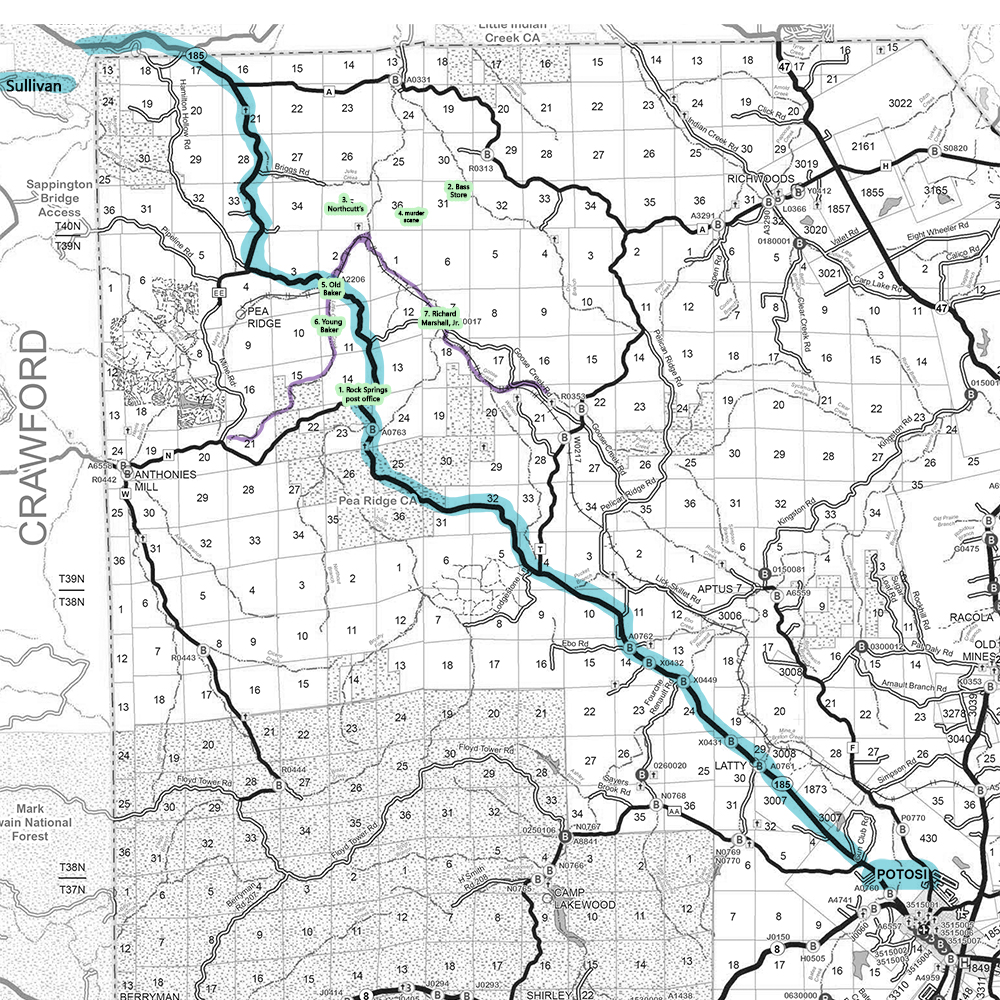
This is an overview map of the murder scene. I have included Potosi and Sullivan.
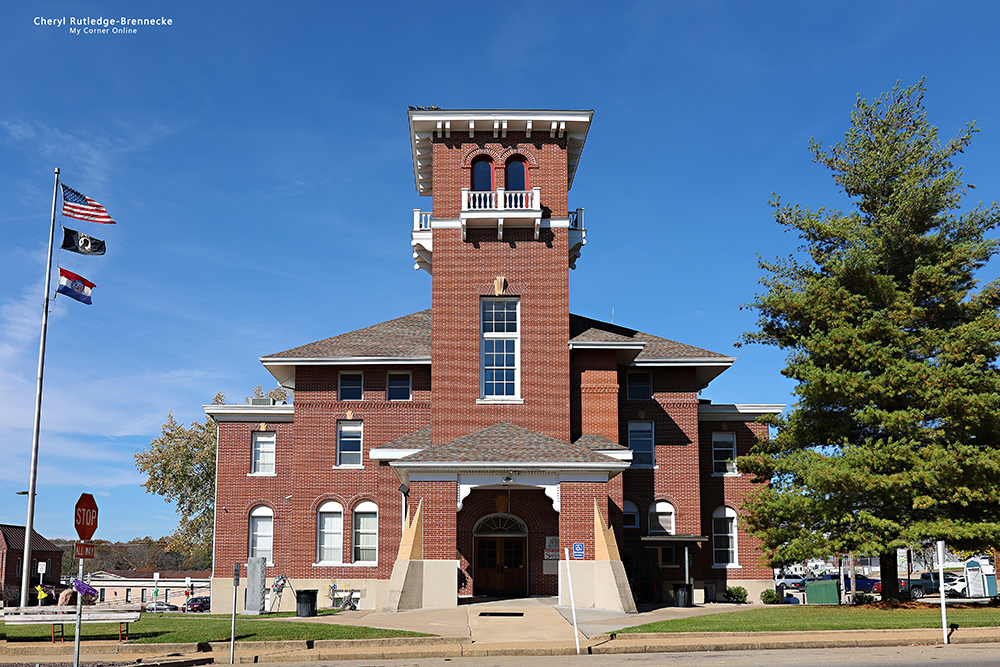
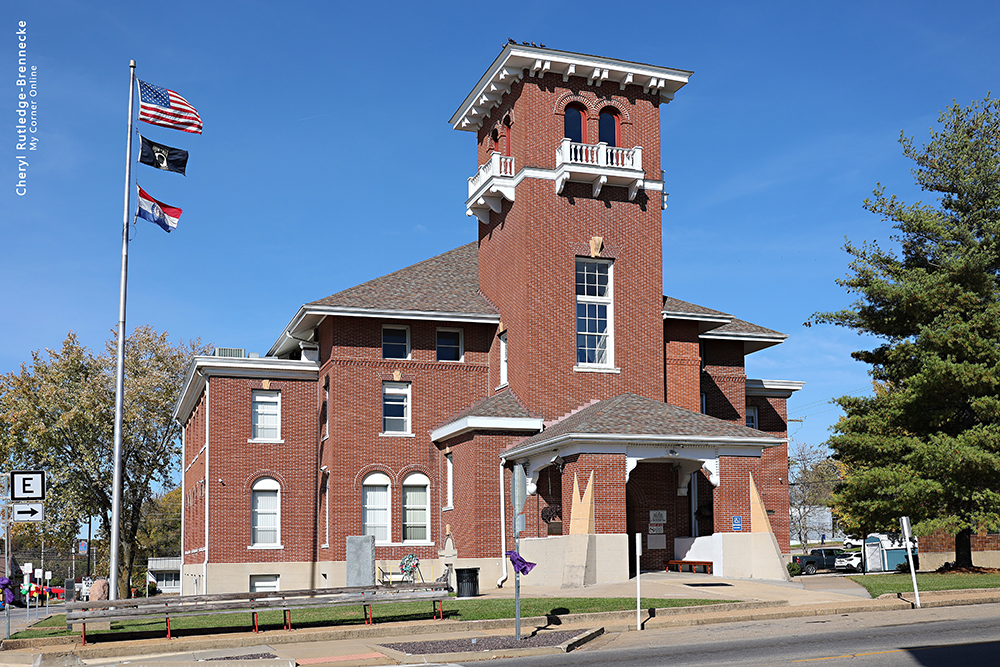
Potosi, Missouri, is where the trial took place at the courthouse. Although this was built in 1908 and is not the building in 1867 when my ancestor went through a murder trial, it is the same location.
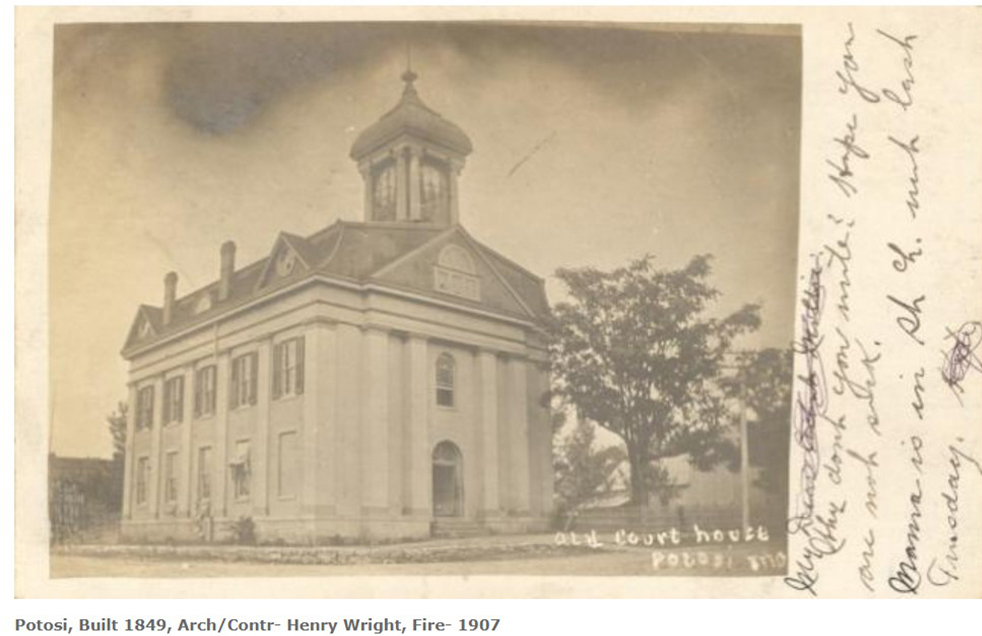
This photo is used with permission courtesy of Keith at courthousehistory.com. This Washington County Courthouse was built in 1849 and I can imagine in my mind Richard walking up the steps and into the doors to go to trial.

Sullivan, Missouri, is where Richard was murdered by Smith Jackson. The Baker family's story is that Richard was murdered in front of Clark Store which was on the corner of Clark Street across from the train depot. There is no building for Clark store currently, but the street corner is shown in this photo across from the train depot. It is my understanding that this was the commercial depot, and that the passenger depot was further down the street, so there is some question about where Smith Jackson was standing. The story as passed down Richard Marshall's family is that Richard was shot dead before he ever left the train in that Smith Jackson boarded the train and shot him on the train.
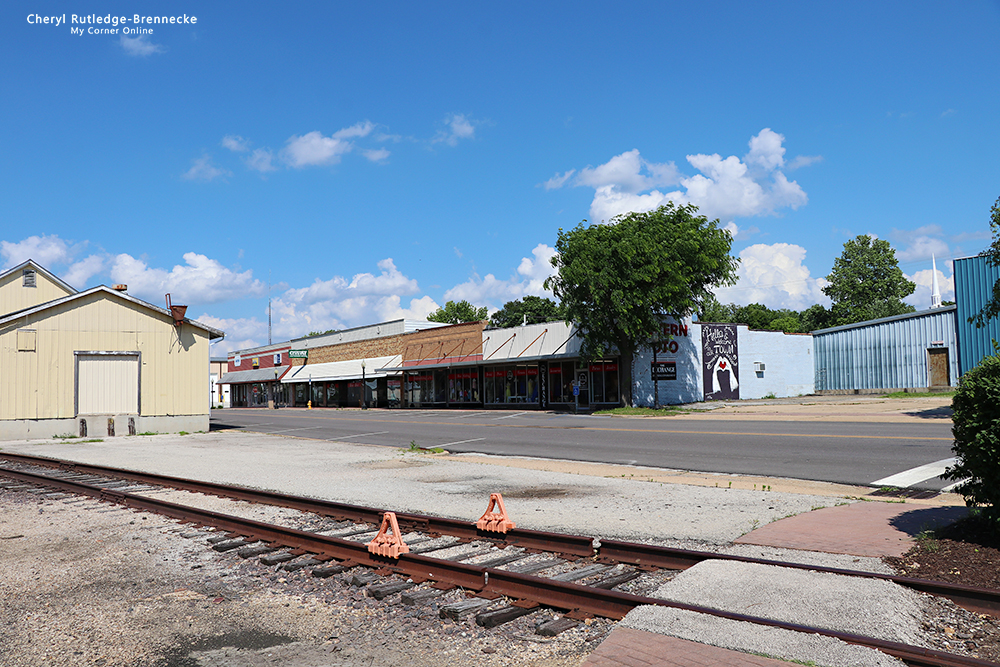
In this view you can see the row of old buildings and the area where Clark Store would have been located, as well as the depot and the train tracks. Regardless of which story is correct, both agree that Richard was murdered in this downtown area of Sullivan, Missouri, by Smith Jackson. I say "murdered" because he was killed in cold blood without Richard even knowing his shooter was present with a gun. It does appear, however, that Smith Jackson was never charged with the crime as he claimed self-defense. There were depositions taken by Smith Jackson's attorney that survived, but I have not been able to find a court trial in either Washington or Franklin Counties. It would seem Smith Jackson was preparing for his defense and those preparations were never utilized.
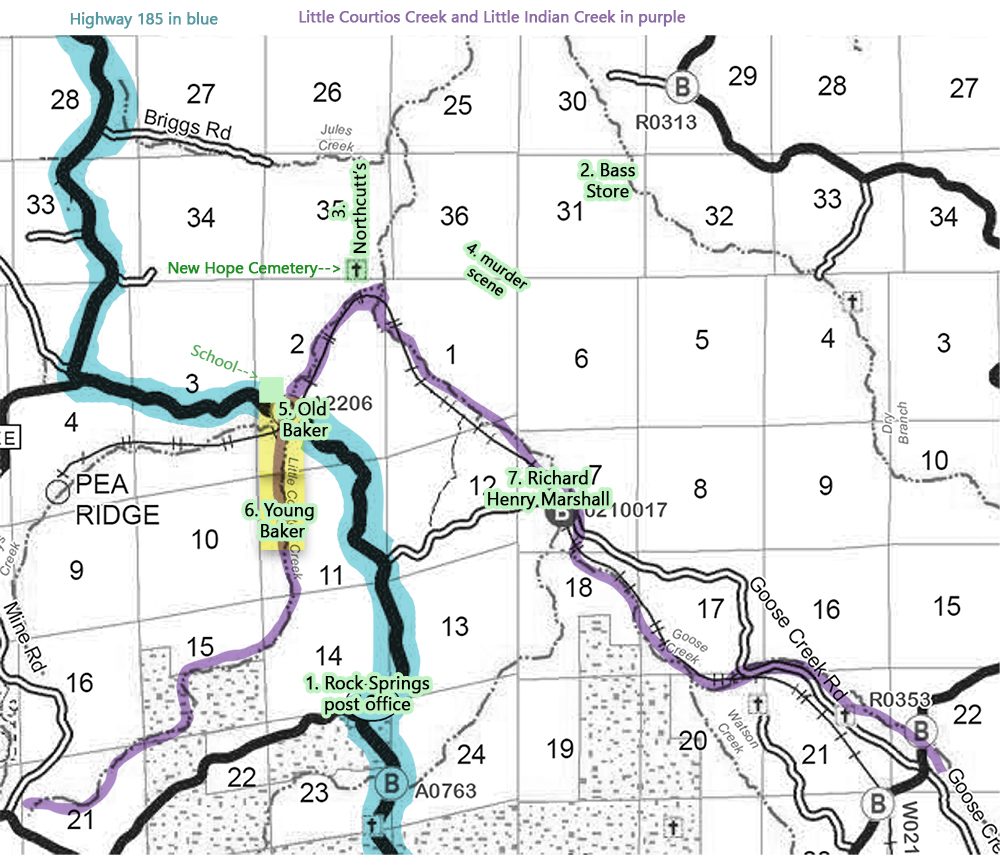
This map is the same as the above map but zoomed in to show better details of the locations in our murder story. I read that nearby Pea Ridge was named so because the soil was so bad one could only grow peas there.
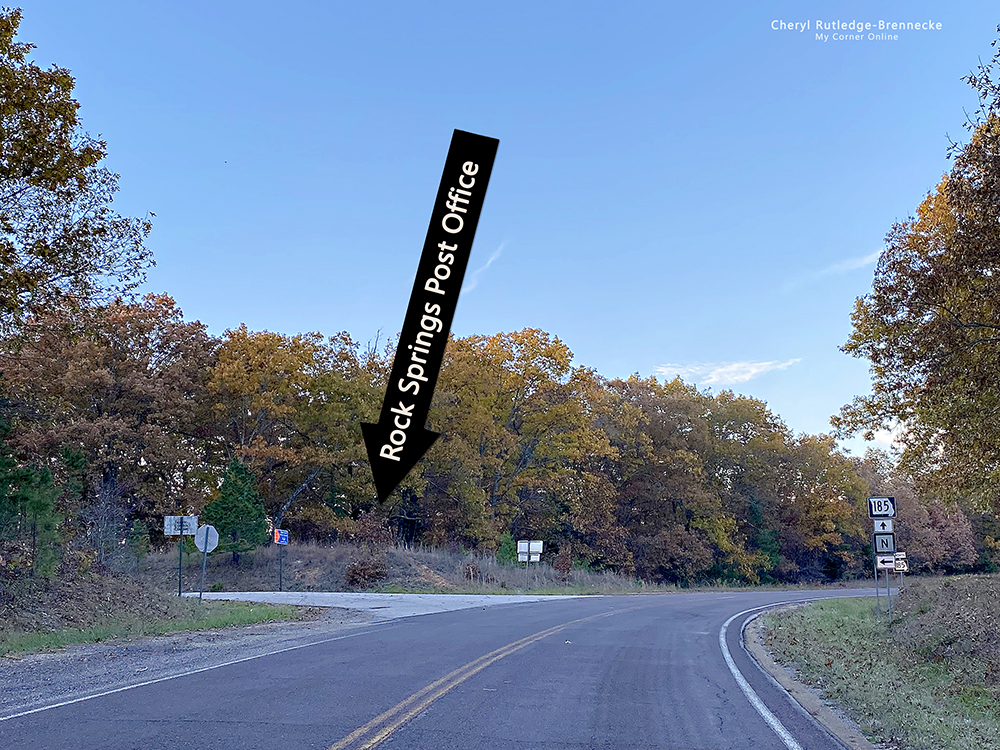
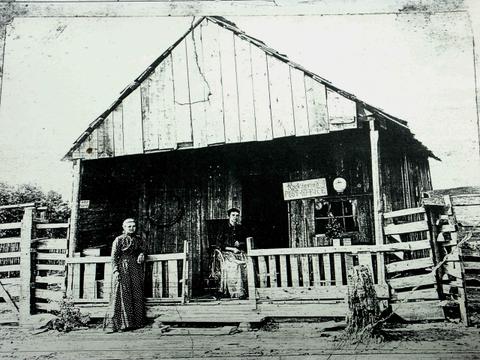
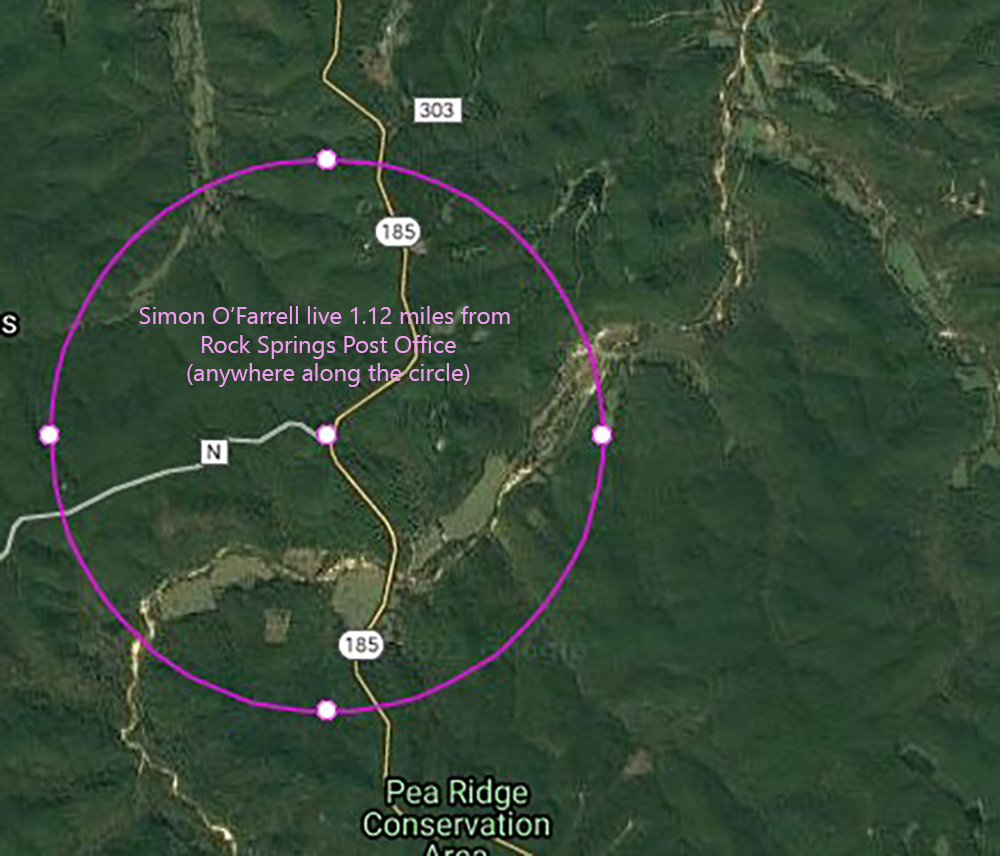
1. Rock Springs Post Office.
Rock Springs Post Office was believed to be at the intersection of Highway 185 and County Road N. This location is found in many of the census for the families in this area. The area was wide as anyone who considered Rock Springs Post Office as their nearest post office were said to have lived there. This location is significant in our story because Simon O'Farrell lived 1 1/8 miles (1.125 miles) from the post office. We do not know where he lived, but it was close enough to give us perspective. We know he was buried more toward where Richard Henry Marshall lived, so a likely location on the above map would be the open hallow on the right side of the circle. We find Simon O'Farrell several times in our story. He is first mentioned by witnesses as Richard being at his home about August 14, three weeks prior to the murder. In addition, Richard went to Simon O'Farrell's home the evening of the murder to try to obtain a warrant against Young Baker. The distance from the Baker's to the O'Farrell's was over 2 1/2 miles since Highway 185 existed and he would have followed that road. This was further than the 2.25 miles that Young Baker took to Bass's for a warrant.
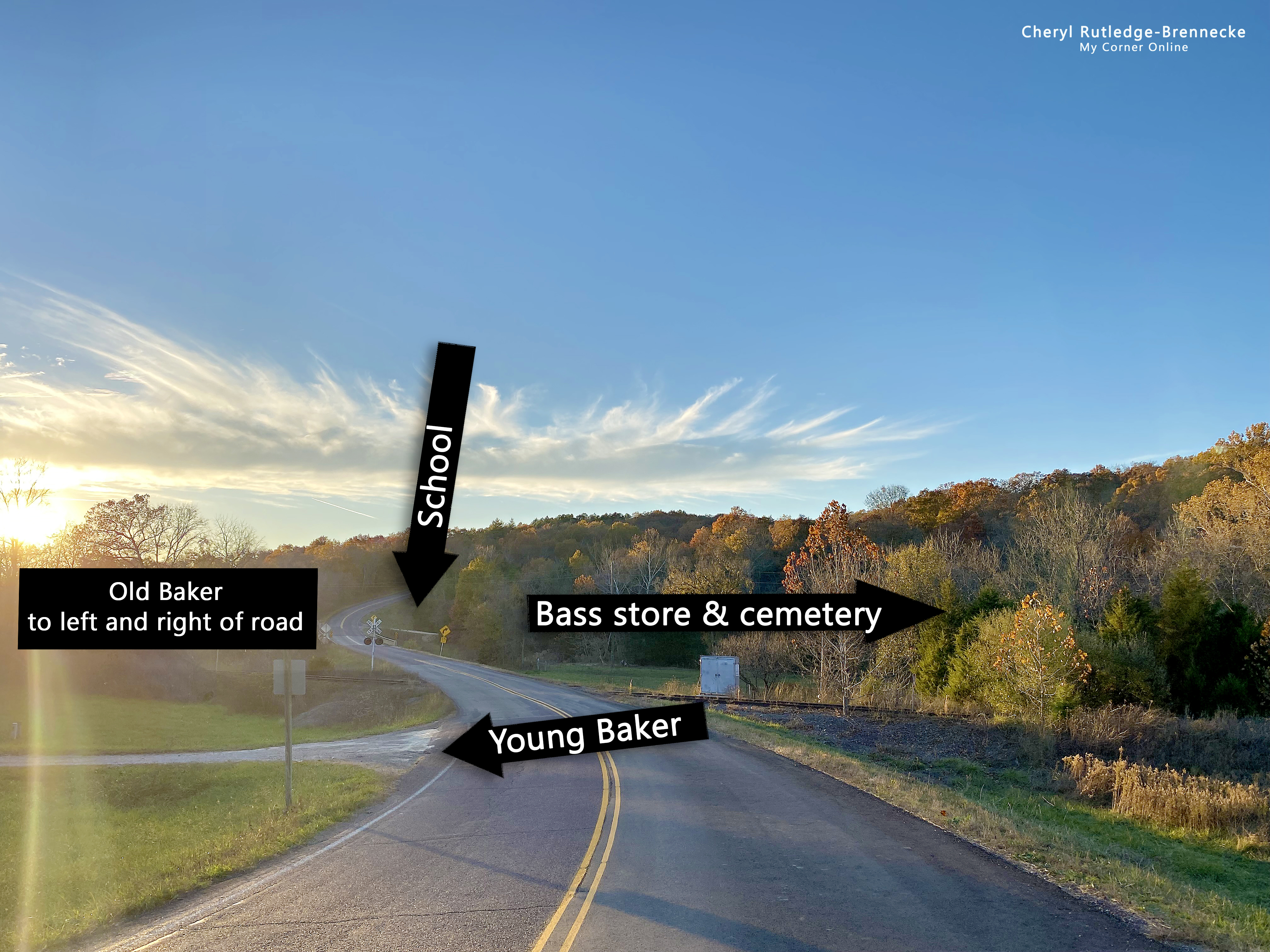
This is a key intersection on Highway 185 where the Little Courtois Creek crosses. The road to the left, at the very end, would be one access to Young Baker's land grant. There is another roadway down to this land off of Highway185. Young Baker's brother Cyrus' land grant would have straddled the road, being mostly to the left, and probably to the right as well. I believe this was Old Baker's homestead. In later years there was a school on this land, as marked in the photo, and it could have been the same location as the school in our story. I had wondered if the school in our story was actually in Old Baker's home. The school was moved in 1948 to a newer building down the road, but the older building was used for community events up to the late 40's or early 50's. To the right following Little Courtois Creek is New Hope Cemetery where it is believed Richard may be buried as Richard's son, Richard Henry Marshall and his wife are buried there. The location and the relativity to the story would make the most sense for where Richard would be buried. Also following the creek and continuing further is the most likely location for Bass store and for the murder scene of Old Baker.
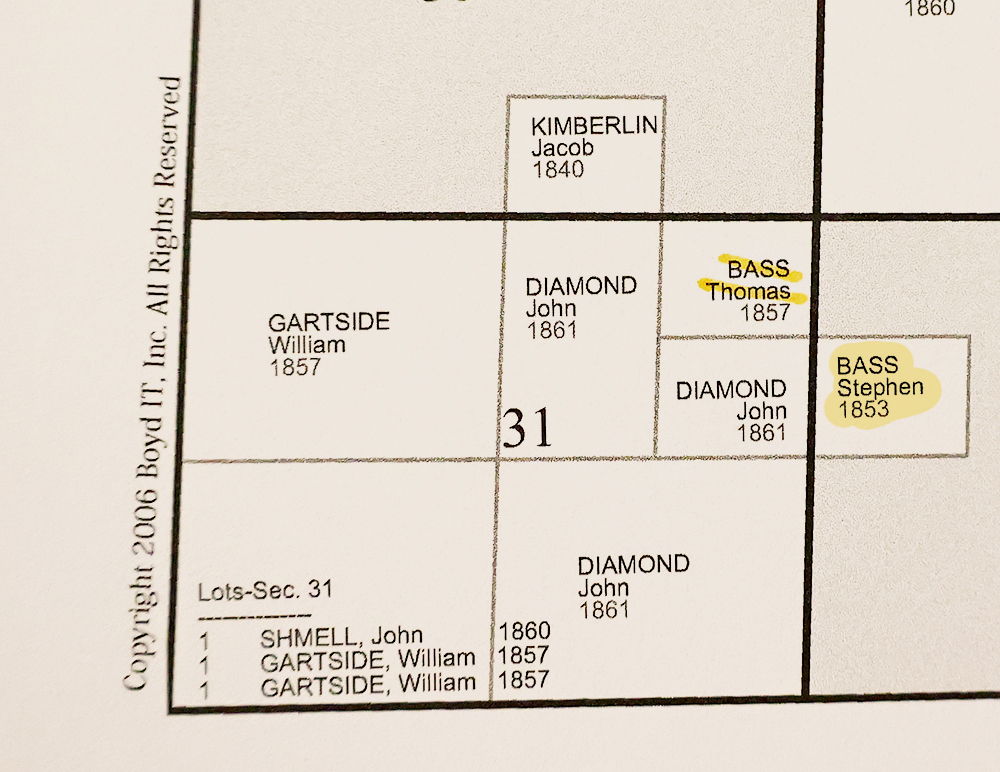
This image is credit to Gregory A. Boyd, J.D. in the book Family Maps of Washington County, Missouri. We see Thomas Bass Jr.'s land grant in 1857 in Section 31. His brother Stephen Bass’s land grant is in Section 32.
2. Bass Store.
Bass Store is a significant location in our story as the men met up here before departing and the murder scene was 3/4 mile from the store. We can only guess the location of Bass Store, but the figures and layout as told in the witness statements fit for the location to have been near where his brother, Thomas Bass, Jr. (1830-1902) was granted a land grant. There was a Rowland Bass (1909-1985) who owned the Bass Mercantile Store in Steeleville in the next century. Our story is about Joseph C. Bass, MD (1822-1895) that was living in Rock Springs in the 1860 census and his father was Thomas Bass (1790-1840). There is also a Stephen Bass nearby (Stephen Duncan Bass 1829-1886) which is also Joseph's brother. Either of these locations would be the general area for Bass Store.
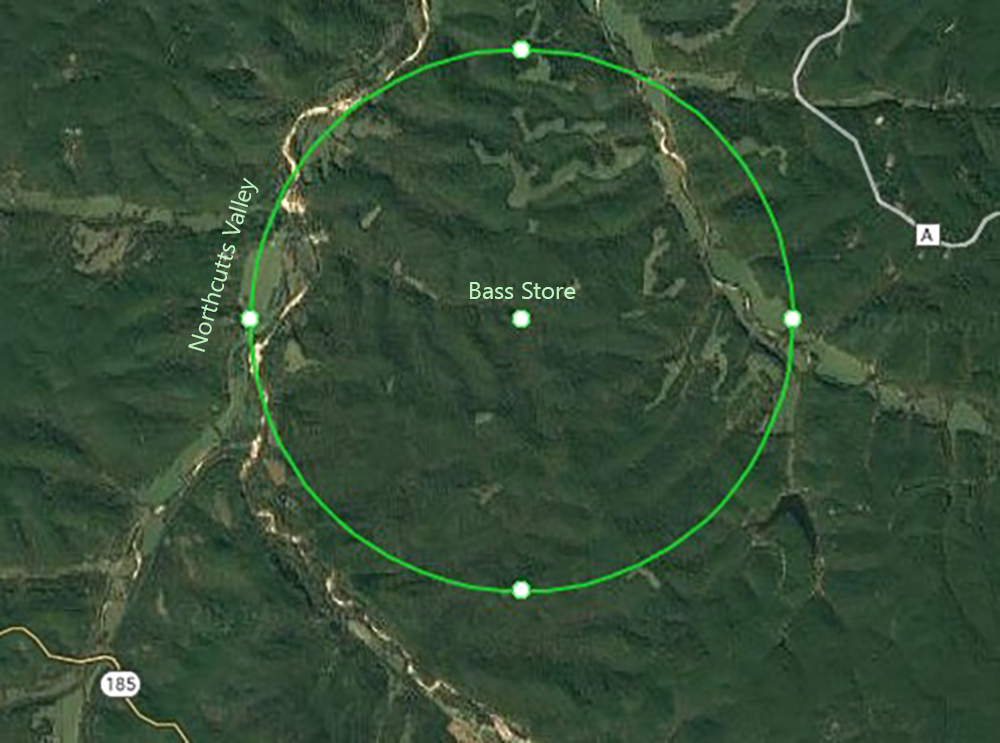
3. Northcutt's
The Northcutt's area shows up in the testimony as Richard and Smith Jackson meeting Young Baker near Northcutt's, which was about 1 1/4 miles from Bass Store. There was additional testimony that Northcutt's is not between Bakers and Bass store and that Richard and Smith Jackson were going in the direction of Northcutt's but turned and went to Bass store.
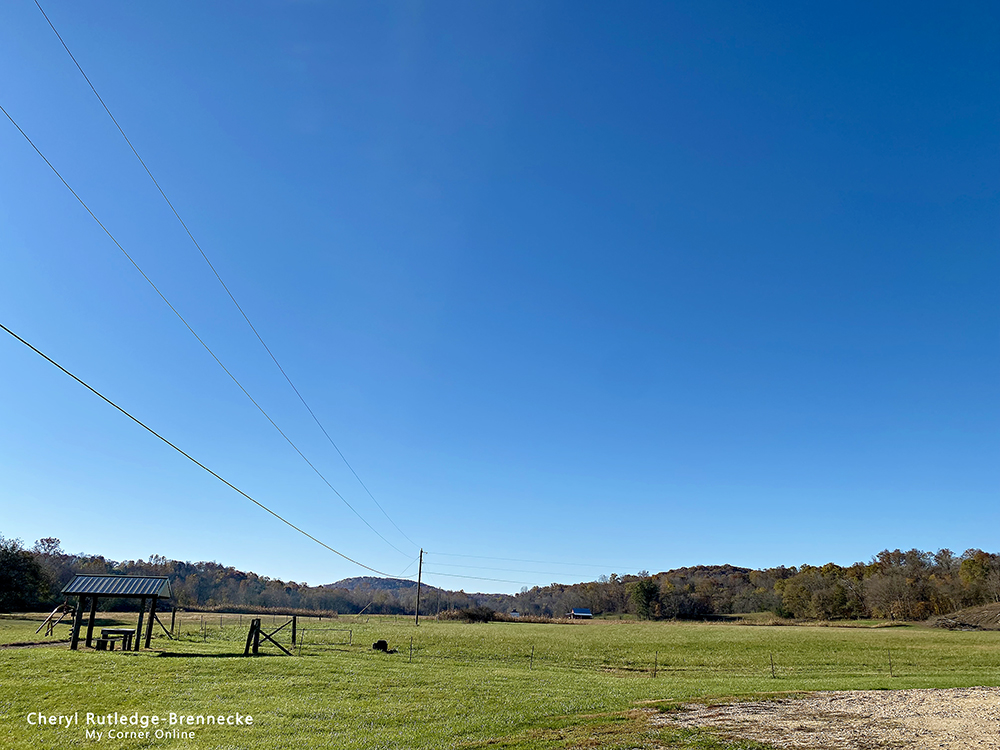
This valley is where the Northcutts lived with their homes spread all throughout the fields. I often wonder if the farmland was created later but what I am getting a sense of now is that when I look at the online map views that the farmlands were actually the areas that were cleared of trees for homesteads and farms back in the early days. Since they are no longer used for homes, the land is now merely farmland. As I look at the overhead online map views and I spy open field areas, I can imagine that this is where old homes and stores would have stood. These valleys were often called “Hollows.”
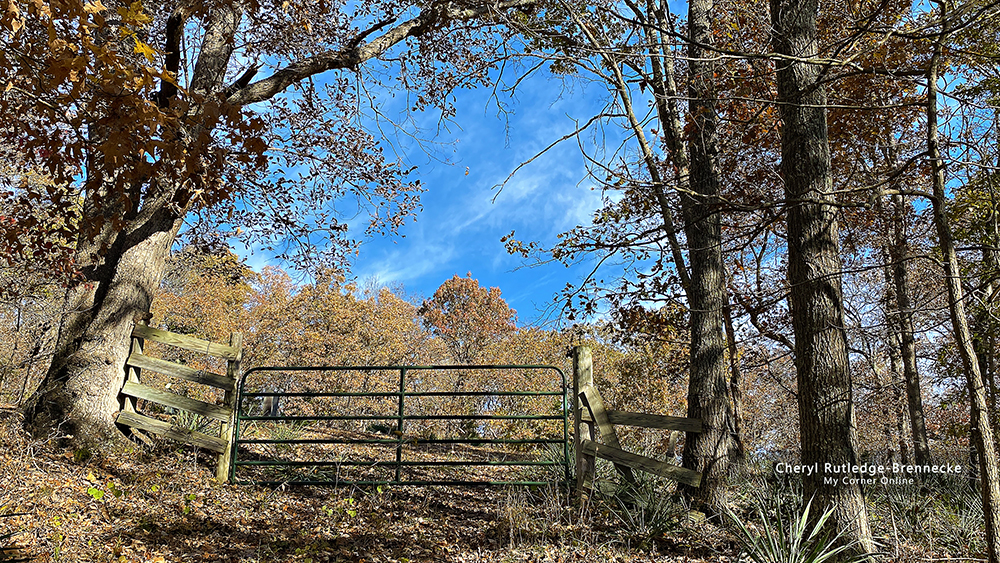
This is the gate to New Hope Cemetery which is up a short hill at the end of the Northcutt Valley. Sometimes it is spelled "Northcut." I understand that there was also a store not too far from Highway 185. A post office called Northcutt was established in 1912, and remained in operation until 1941 and the internet puts this location at the intersection of Goose Creek Road and Little Indian Creek where Richard Henry Marshall lived. This fact does bring the possibility that the Northcutts referenced in the story were at that location, but we also learned that the Northcutts lived in the valley by the cemetery and that location matches the mileage from Bass store to the Northcutts whereas the other location is too far away.
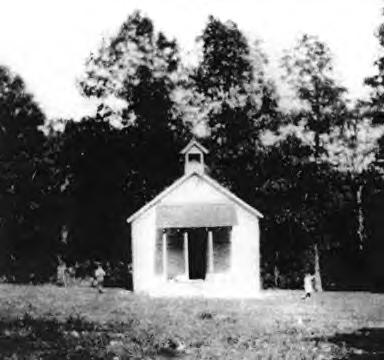
This is New Hope Church which is at the base of the hill from New Hope Cemetery. We found the steps to the church now in the woods as shown in the video. The Bakers were buried in a different cemetery. This page gives information on the Baker Cemeterywhich states, "Highway 185 southwest of point where Pea Ridge railroad spur crosses; access only through fields" OR "Off Highway 185 near farm of John Dilks. The old road came to Algeire Post Office, near Courtois Creek at Highway 185." This description seems to describe a cemetery on the Baker land. It is interesting that the website indicates Old Baker was murdered by "Marshall Zeko." I wonder where that information came from as the only place in which I have seen the name “Ziko” is in the pardon package.
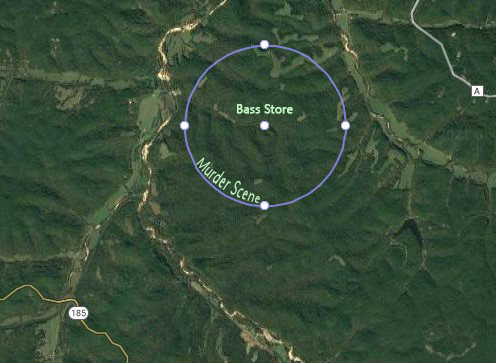
4. Murder scene.
Richard borrowed a knife 200 yards from Bass Store and there is controversy as to whether the knife was returned to Young Baker. The murder scene is 3/4 mile from Bass Store. Thereafter, Young Baker testified that Richard chased him 50-80 yards. His testimony continues that he ran 20-30 minutes for another 1 1/2 miles to the Old Baker home.
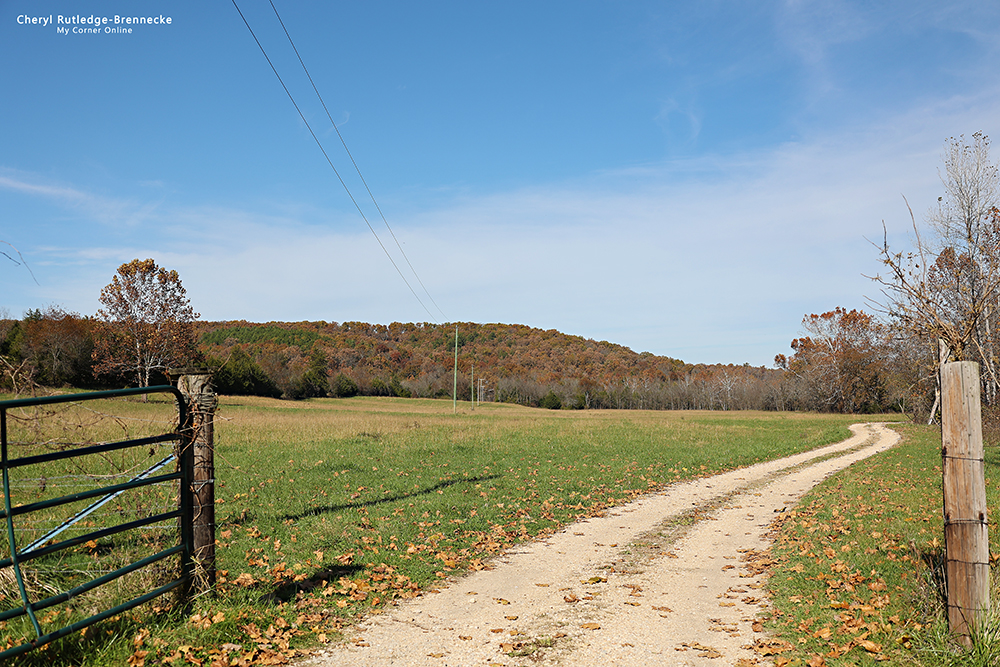
5. Old Baker homestead.
The murder scene was 3/4 mile from Bass store and Young Baker ran another 1 1/2 miles to Old Baker’s, for a total distance from Bass Store to Old Baker's home of 2.25 miles. This distance "as the crow flies" from our assumed location of Bass store places Old Baker's home where the land grand for his son Cyrus Herod Baker, Sr. is located. Cyrus is the brother of Young Baker.
The above photo would have been the land of Cyrus and Old Baker which was in the same valley (hollow) as Young Baker's homestead. Somewhere along in this valley would have most likely been several cabins of various Baker families and it is believed that Richard Marshall, his third wife Elizabeth, and his daughter Mary Lucinda Marshall (Wright, Grimes) were living here also.
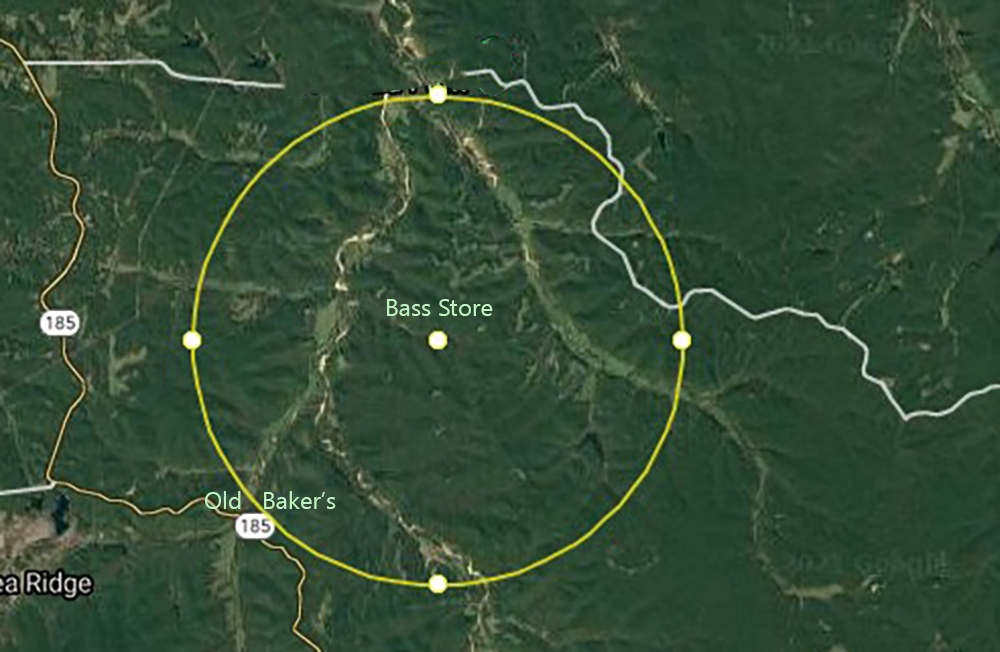
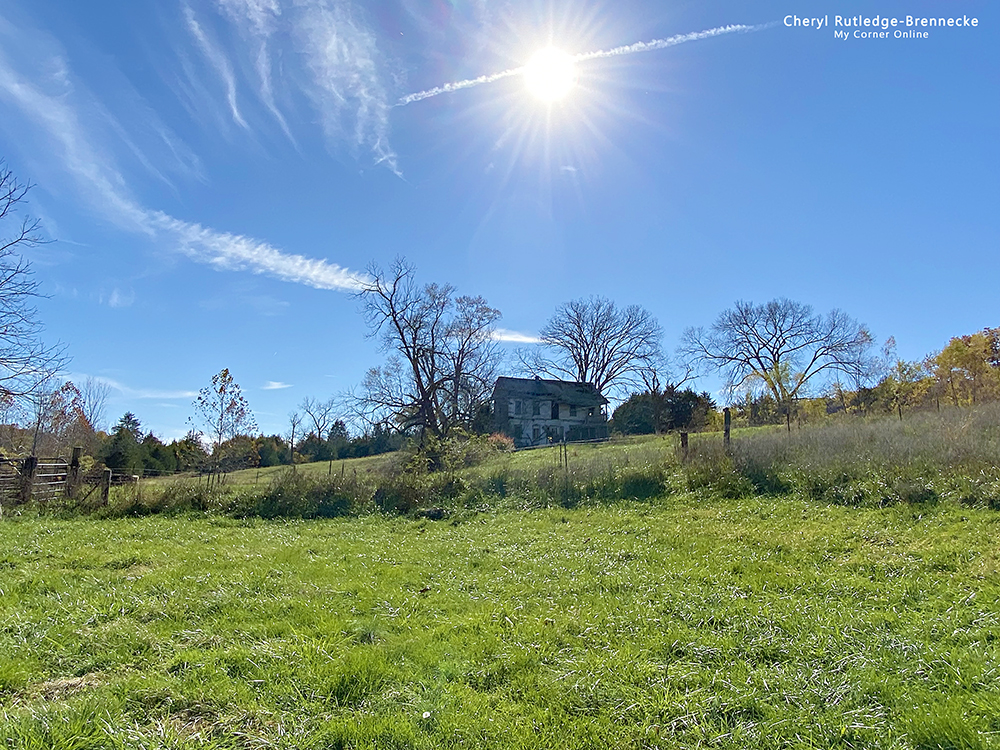
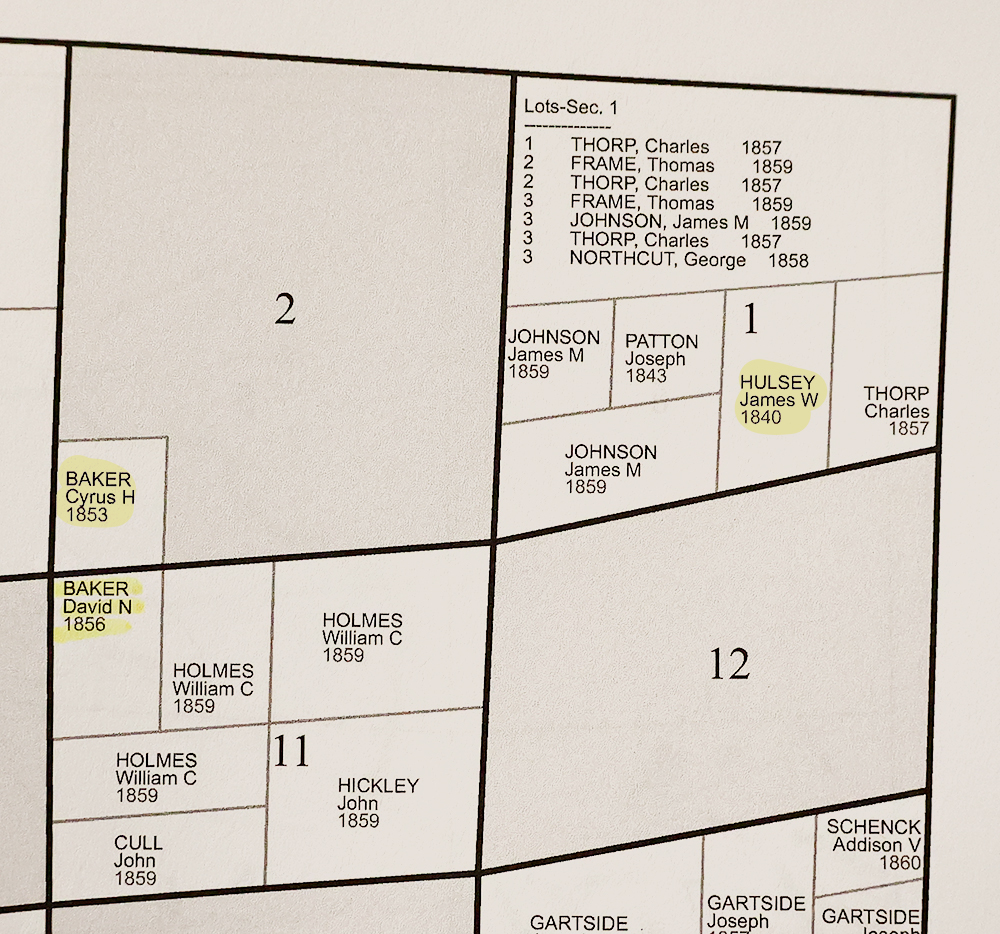
This image is credit to Gregory A. Boyd, J.D. in the book Family Maps of Washington County, Missouri. We see (Young Baker’s) David N. Baker's land grant in 1856 in Section 11 and his brother Cyrus H Baker's land grant in Section 2 in 1853. Also noted in our story is the land grant of James W. Hulsey.
6. Young Baker homestead.
It is believed that Richard Marshall lived either on the Young Baker land or on the Old Baker land. Both parcels adjoin each other. The above photo shows the land about where the two parcels adjoin. The home you see is believed to have been moved here from another location later than the time period of our story. From the testimony it would seem that Richard's daughter went to school at Old Baker’s. Also, after the murder Richard's wife ran home to see if the coffee had been taken to her home and it reads as if the distance was not far. Young Baker's house was 1/2 mile from Old Baker's house. The distance of Young Baker property from long end to long end is 1/2 mile, so it would make sense that Old Baker's home was on Cyrus's land grant.
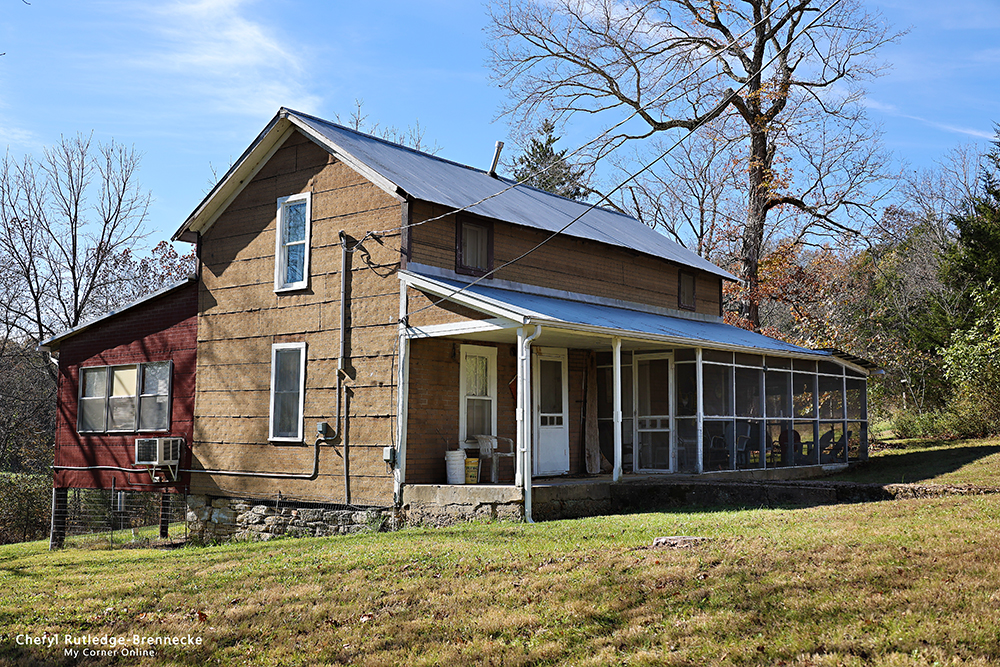
7. Richard Henry Marshall's homestead.
This home is not in the story but occurs when Richard Henry Marshall (son of Richard Marshall) was an adult and married. Richard Henry was born either shortly before the murder or shortly after (being as records list different years). It would have been around his marriage in 1889 that he might have begun to live here. The significance of this location is to gain an understanding of how folks traveled along the creeks. The creeks provided a landmark to travel. There is a Little Indian Creek near Richard Henry's home that intersects with Little Courtois Creek which runs along the Baker property. Later in the 1950's, or so, a railroad was built along the same path.
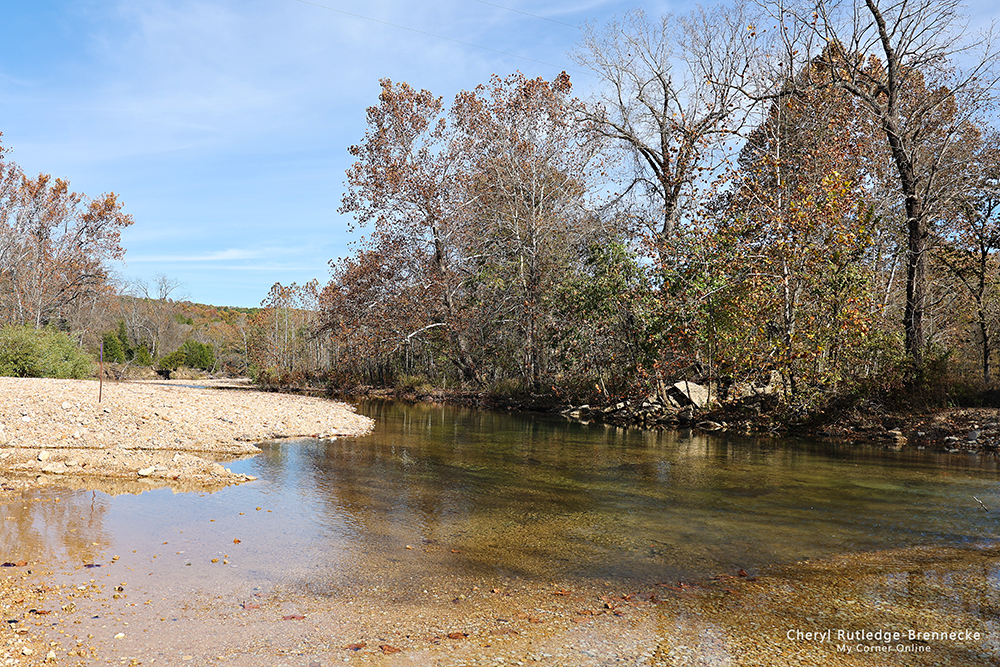
This is Little Indian Creek just down from Richard Henry Marshall's home. I could so get in this clear water and relax! This gives us a little bit of life back in the day living along a creek and using a creek as a marker for foot and horse travel.
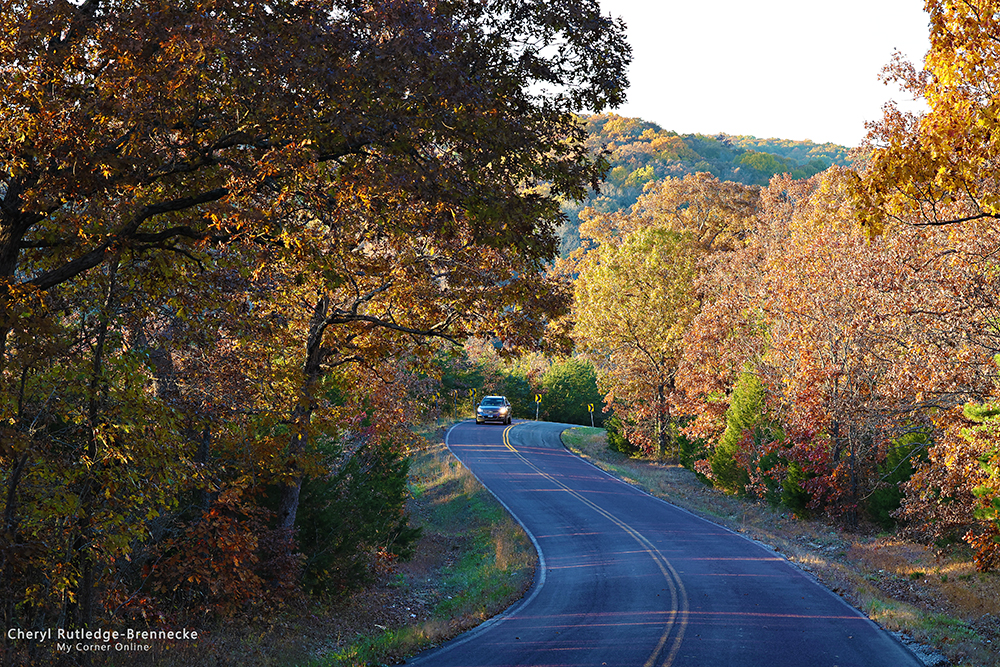
This is a photo of Highway 185. I am learning that this Highway was well used by many of my ancestors who lived in Washington County.
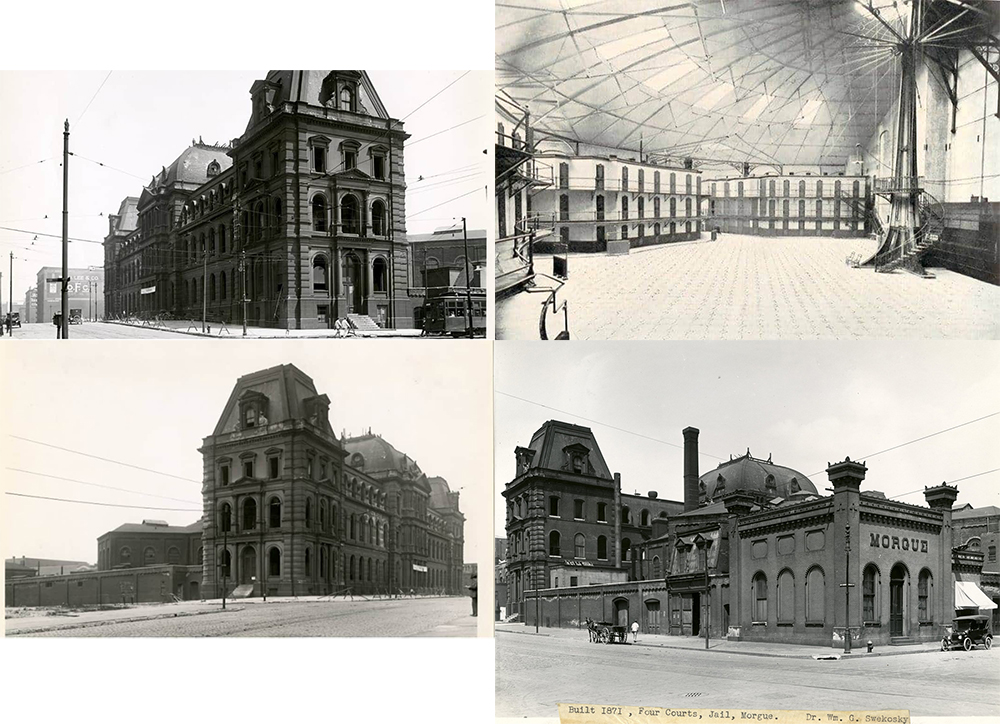
These are photos of the Four Courts Jail and Morgue that was located from Clark to Spruce between 11th and 12th Streets, in front of the Old Courthouse in downtown St. Louis. This would have been where Richard Marshall was held and where some of the prison breaks that he thwarted occurred.
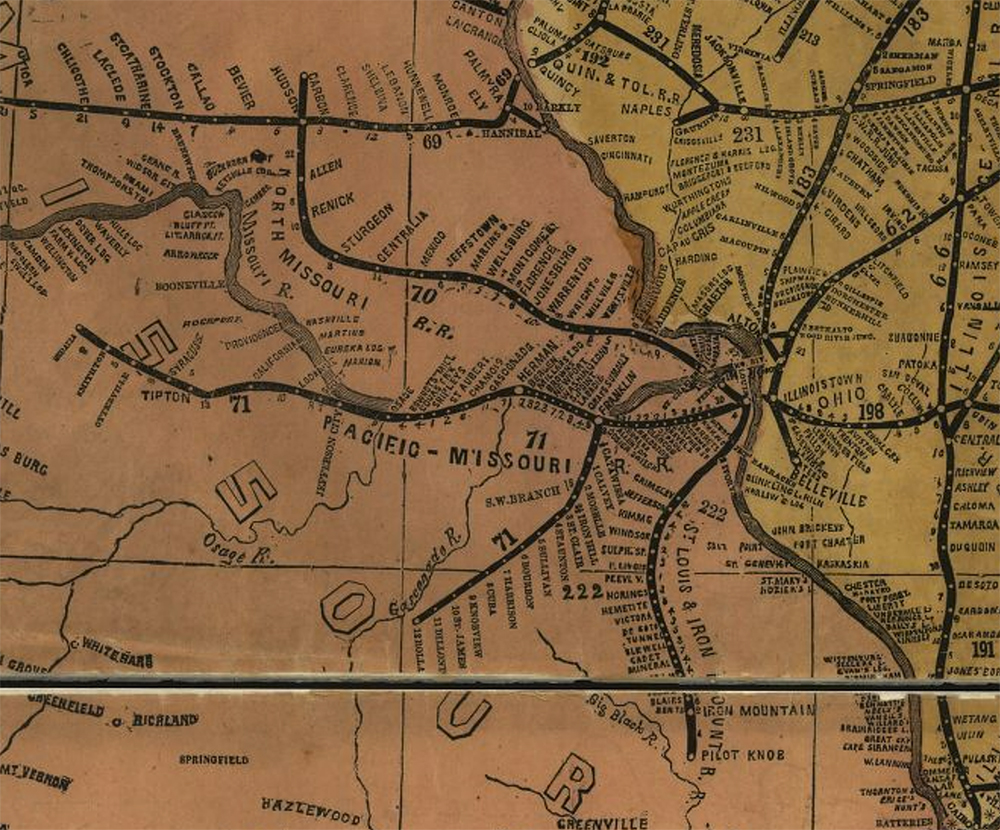
This is part of the1861 Lloyd's American railroad map which shows the St. Louis & Iron Mountain Railroad existed at the time of the murder trial. Therefore, Richard may have ridden this train from Potosi to St. Louis when he was in custody. It is of interest to me that this railroad runs all the way to Pilot Knob as it connects various ancestral lines. There is also the St. Louis San Francisco Railroad that runs through Sullivan and makes it way into St. Louis. This would have been the line that Richard traveled after being pardoned where he was murdered in Sullivan.